Moss and mammoths (part 1)
"- Friends! We have two problems. The Ministry of Defense and the button. Can we find the button? Theoretically? We can. But with the Ministry of Defense ... nothing. Conclusion: we are looking for the button."
- the play “Radio Day”
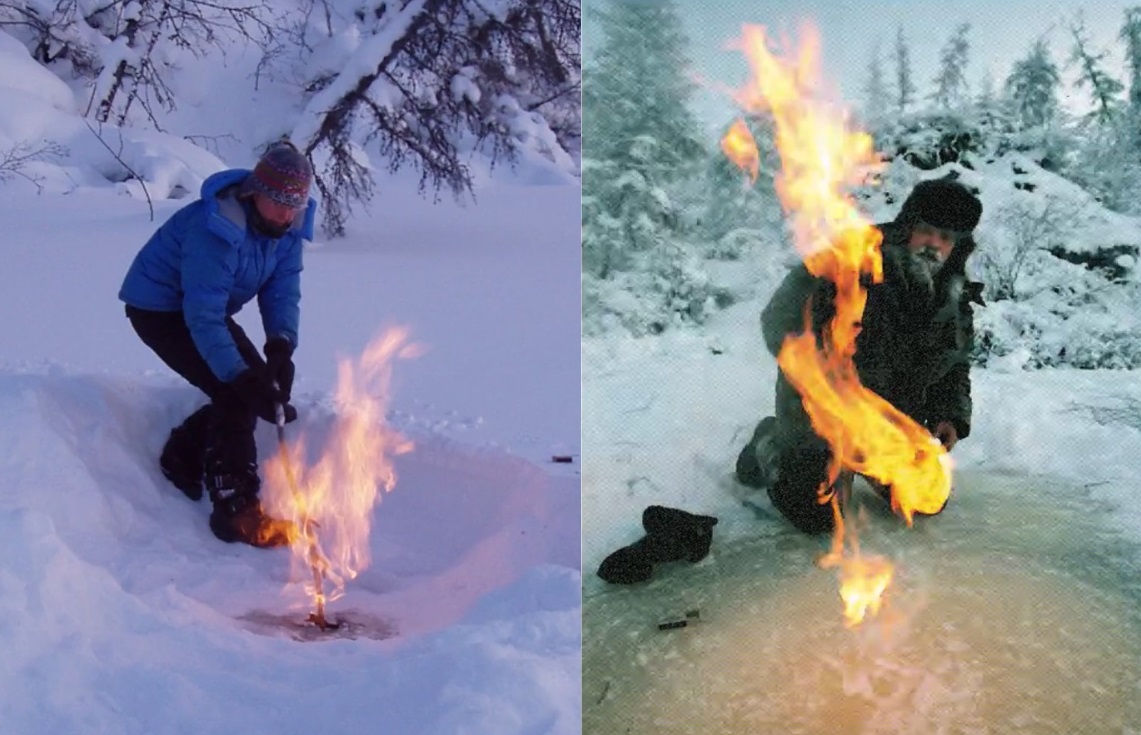
Methane released during permafrost melting.
tl; dr
- A new (“permafrost”) model of the carbon cycle is proposed instead of the old (“oceanic”) one.
- Carbon worth $ 30 trillion (at the rates of the Paris agreement) is in permafrost.
- Permafrost is melting.
- The permafrost is melting quickly, we have 20-30 years in reserve.
- More than 20 years in Yakutia, severe men have been creating the “Pleistocene Park” .
- Russia can control the composition of the global atmosphere.
Under the cut is the first video lecture by Sergey Zimov and a short synopsis.
The Pleistocene Park is a nature reserve in the northeast of Yakutia in the lower reaches of the Kolyma River, 30 kilometers south of the village of Chersky, 150 km south of the coast of the Arctic Ocean. The creator and supervisor of the reserve is Russian ecologist Sergei Afanasevich Zimov.
An experiment is being conducted in the reserve to recreate the Pleistocene ecosystem of “mammoth tundrosteps” that existed in large areas of the Northern Hemisphere during the last glaciation.
Mammoth tundra-steppes were supposedly ten times more productive than the forest-tundra and bog-tundra biota existing now in their place. As a result of the extinction of large herbivores about 10,000-12,000 years ago (mammoth, woolly rhinoceros, large-horned deer, etc.), the system degraded to its current state. According to many scientists, hunters of the Upper Paleolithic played a significant or even decisive role in this extinction.
The idea of the Pleistocene park is to introduce preserved megafauna species in order to recreate the soils and landscapes characteristic of mammoth tundra steppes, which should lead to the restoration of a highly productive grass cover. Yakut horses, reindeers, elks, sheep, musk ox, yaks, bison and maral live in the park.
- Wikipedia
A place
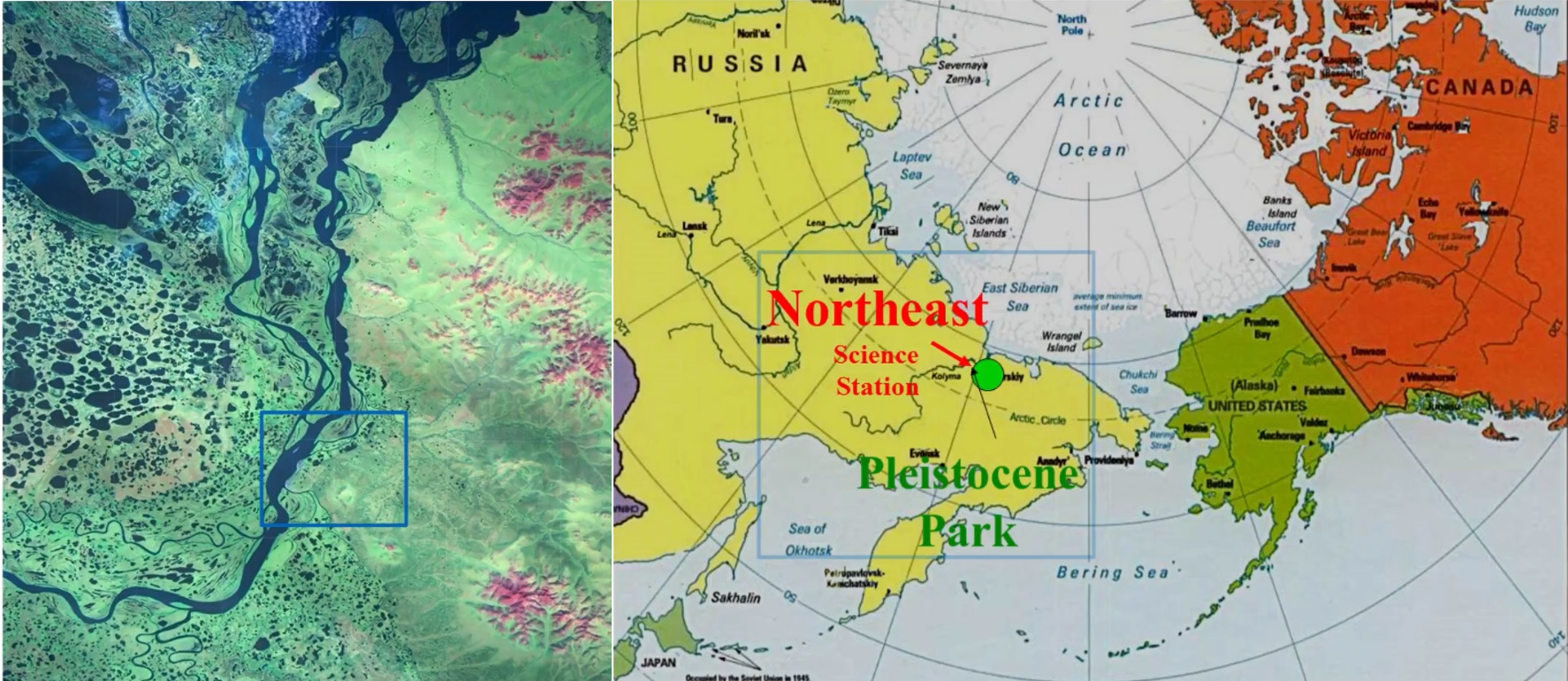
The lower reaches of the Kolyma river. Near the ocean, seaport, runway. Convenient logistics.
Context
A few photos that convey life in the park
When there are no roads at all, that is an all-terrain vehicle. The manipulator on the roof allows not only lifting loads up to 2 tons in weight, but also installing scientific equipment on them.
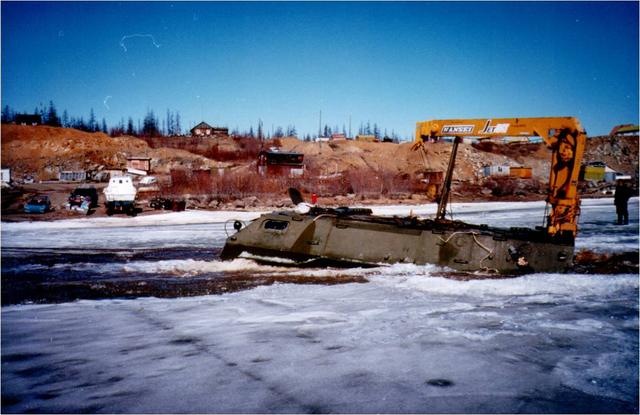
In addition to the fact that this all-terrain vehicle walks everywhere, it also swims. This quality has several times been the reason that this technique is still available at the station.

The hovercraft moves on any flat surface, whether it is water, ice or sand. The technique is indispensable when the ice on the river is either still or is already unsuitable for riding on traditional types of equipment.

Flying Laboratory A
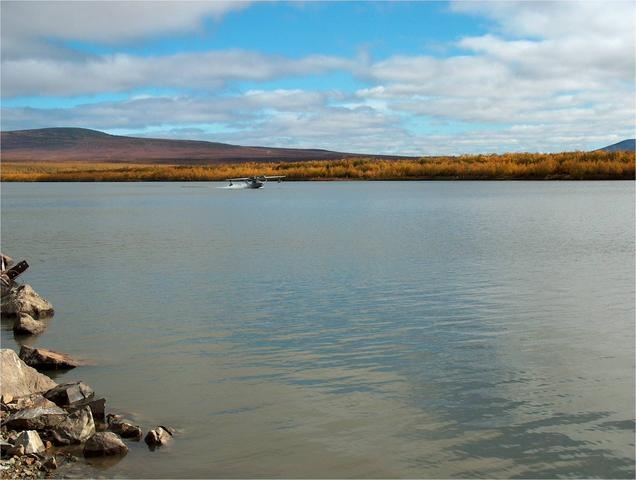
2-4-seat aircraft allows you to take off from the water in the summer and is equipped with skis in the winter. Rises to a height of 3 kilometers with a cruising speed of 160 km / h
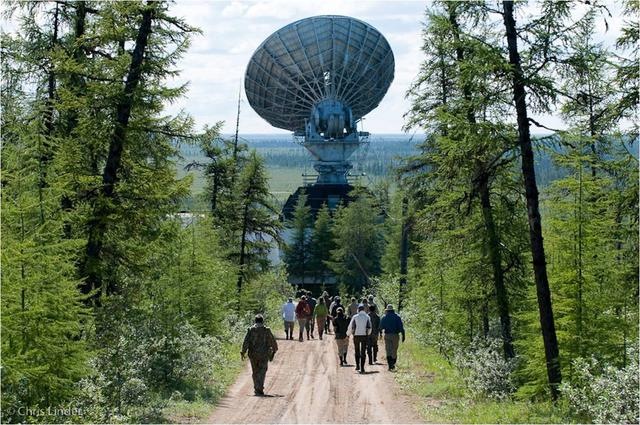
The building of the Orbit. The building houses laboratories, an office, a conference room, living quarters with all the amenities. A
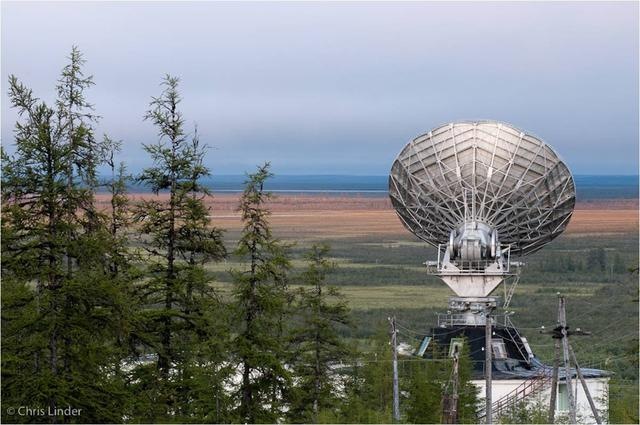
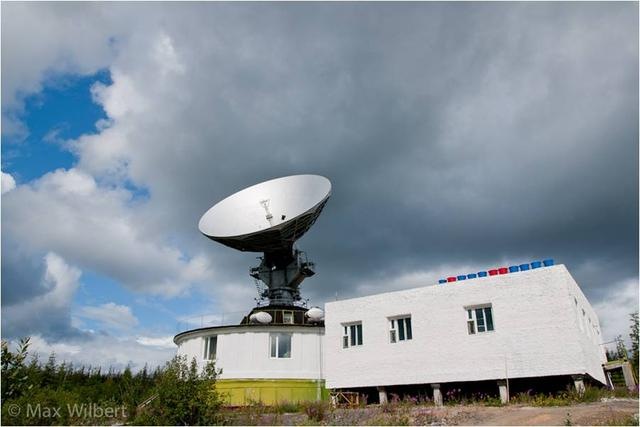
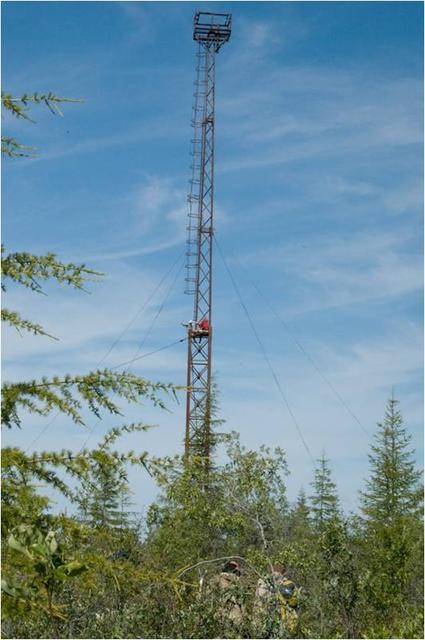
tower in the park with scientific equipment that allows, among other things, to measure CO2 and CH4 flows throughout the park. The tower was installed in 2007
vk.com/album-30860130_148245653
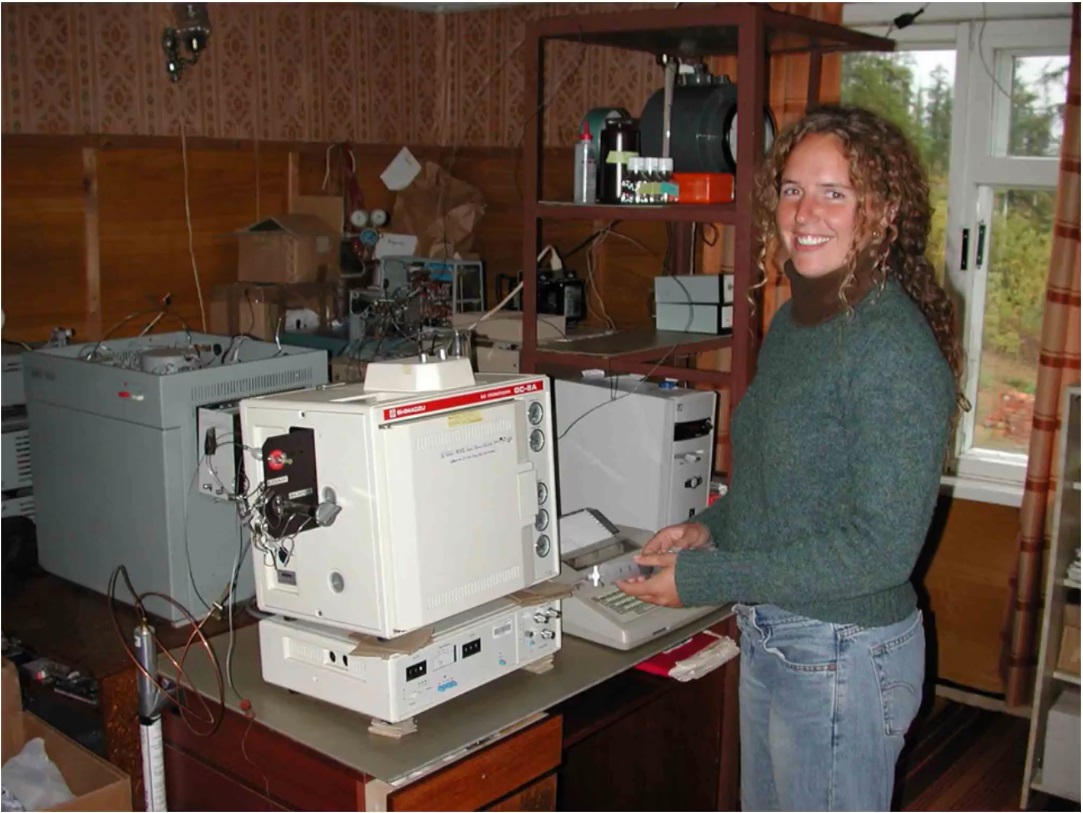
This girl has “The best dissertation of the USA”.
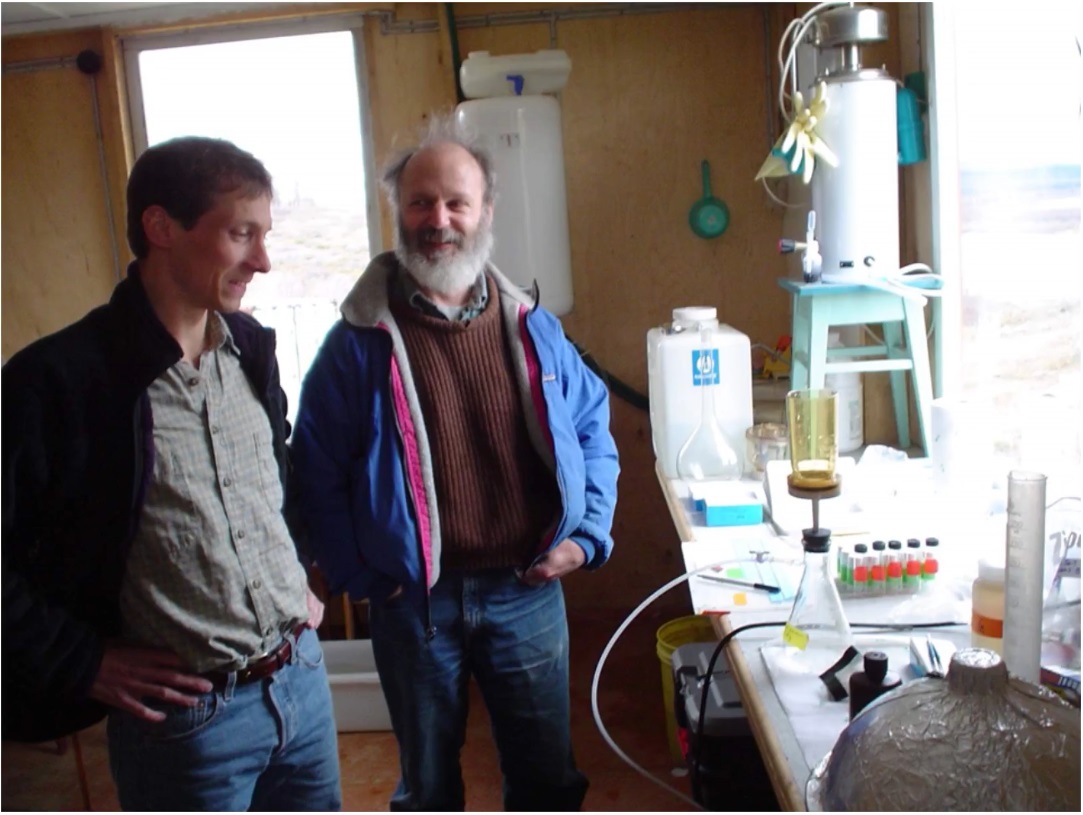
Terry Chapin - The Most Highly Cited US Academician



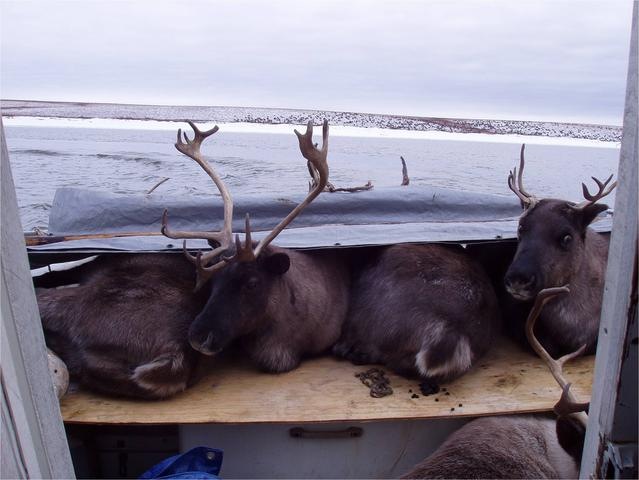
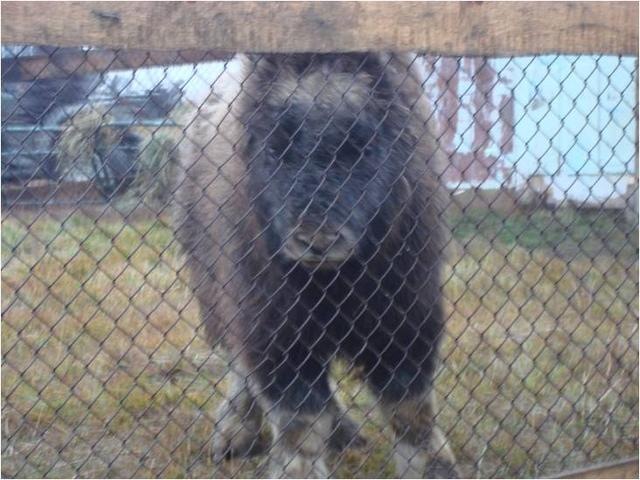
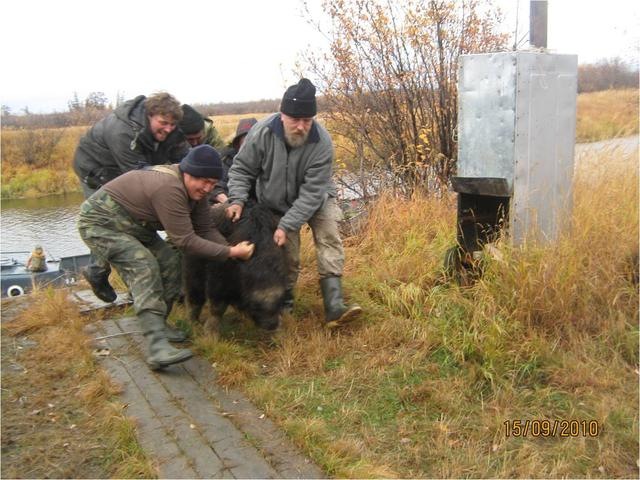

When there are no roads at all, that is an all-terrain vehicle. The manipulator on the roof allows not only lifting loads up to 2 tons in weight, but also installing scientific equipment on them.

In addition to the fact that this all-terrain vehicle walks everywhere, it also swims. This quality has several times been the reason that this technique is still available at the station.

The hovercraft moves on any flat surface, whether it is water, ice or sand. The technique is indispensable when the ice on the river is either still or is already unsuitable for riding on traditional types of equipment.

Flying Laboratory A

2-4-seat aircraft allows you to take off from the water in the summer and is equipped with skis in the winter. Rises to a height of 3 kilometers with a cruising speed of 160 km / h

The building of the Orbit. The building houses laboratories, an office, a conference room, living quarters with all the amenities. A



tower in the park with scientific equipment that allows, among other things, to measure CO2 and CH4 flows throughout the park. The tower was installed in 2007
vk.com/album-30860130_148245653

This girl has “The best dissertation of the USA”.

Terry Chapin - The Most Highly Cited US Academician






Permafrost

One strip is land, one strip is ice. Up to 90 meters.
It is getting warm, and the permafrost has begun to melt.
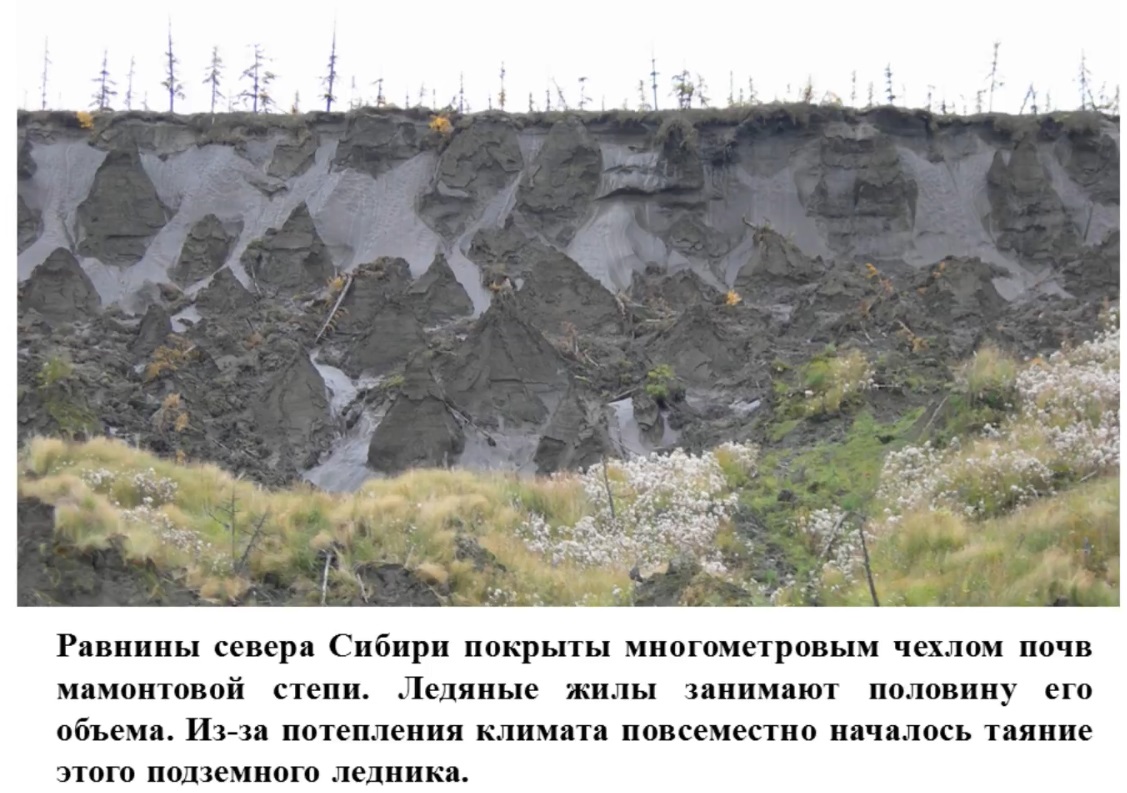
In summer it happens up to +35.
If the permafrost begins to melt, erosion begins.

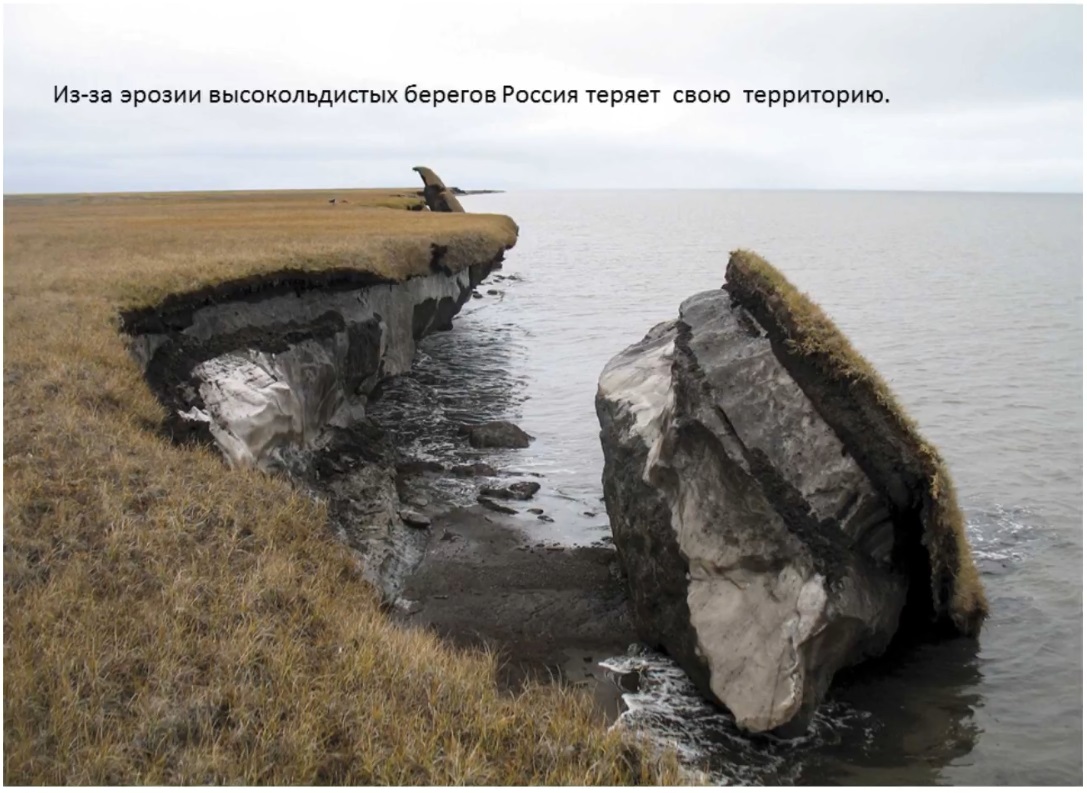
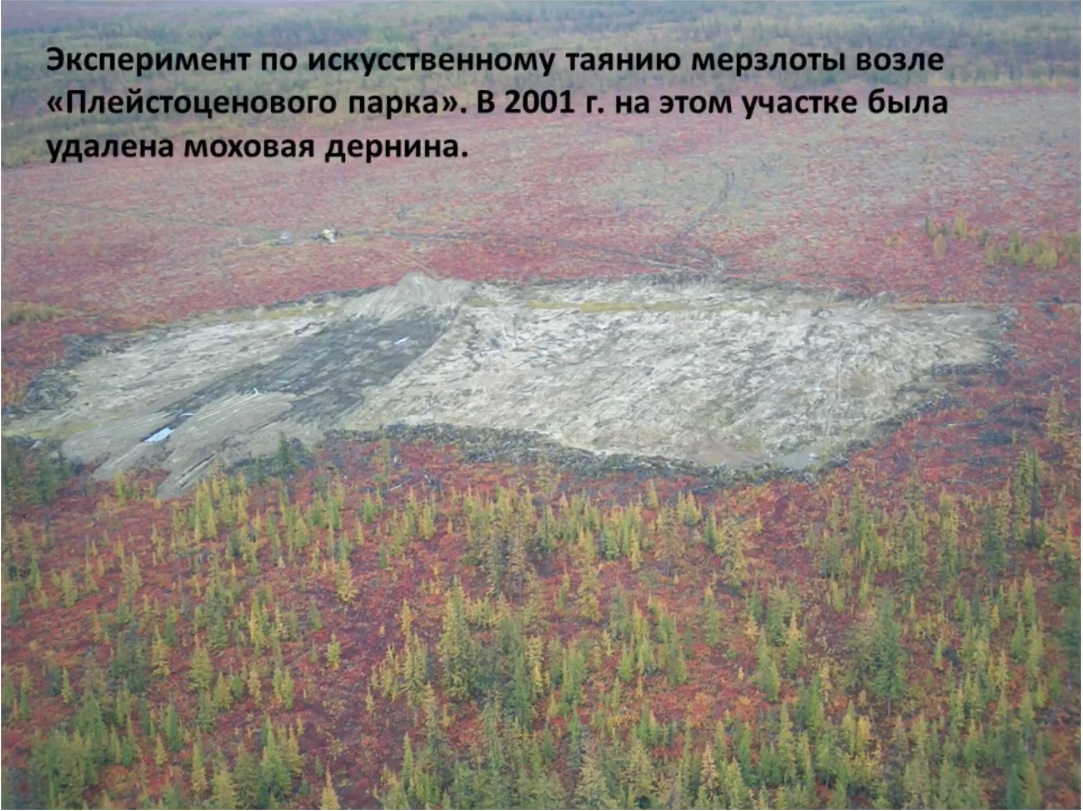
17 years ago, we drove a bulldozer and simulated a forest fire. They removed the moss cover (of the type burned out), somewhere they dug deeper.
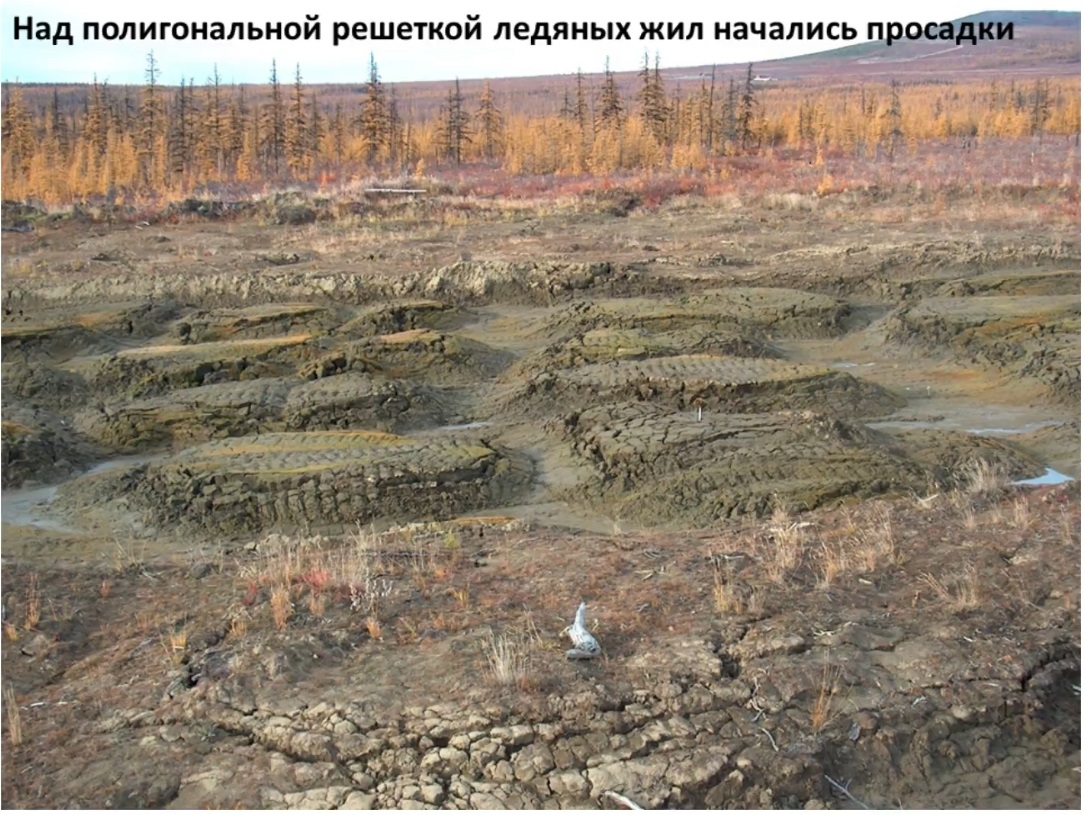
In June, we scraped off, and in September, the lattice of polygonal ice, a system of ditches, had already been opened.
And away we go ...

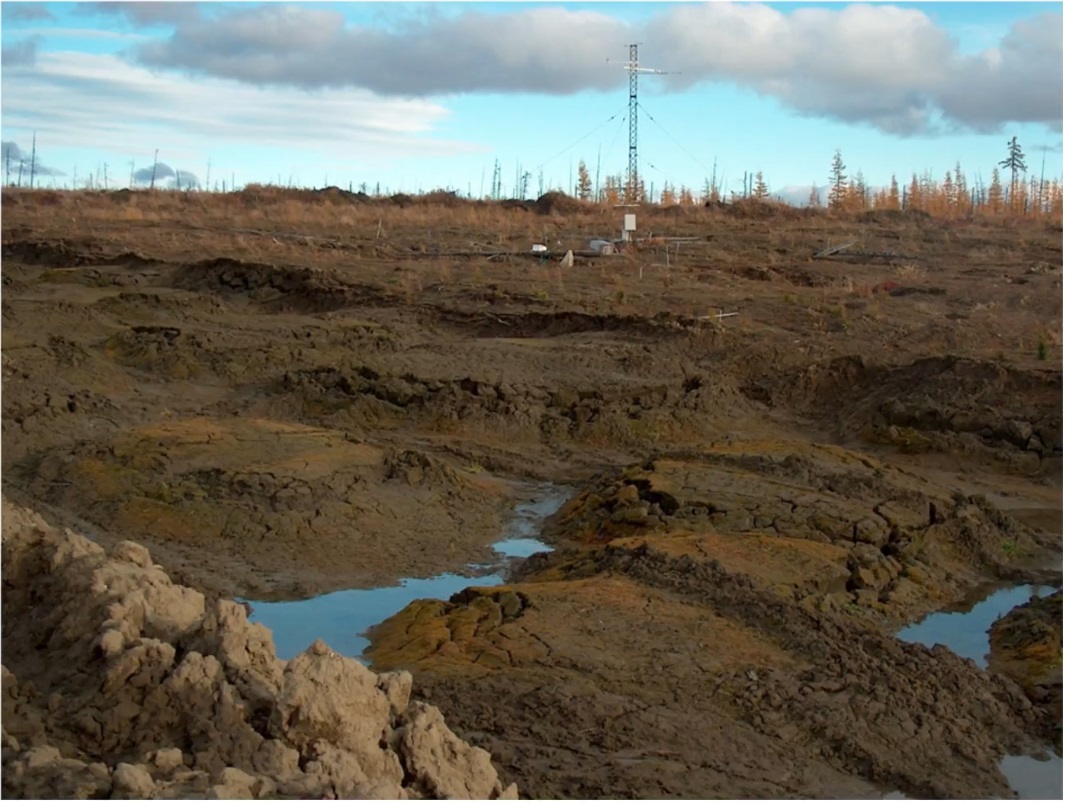
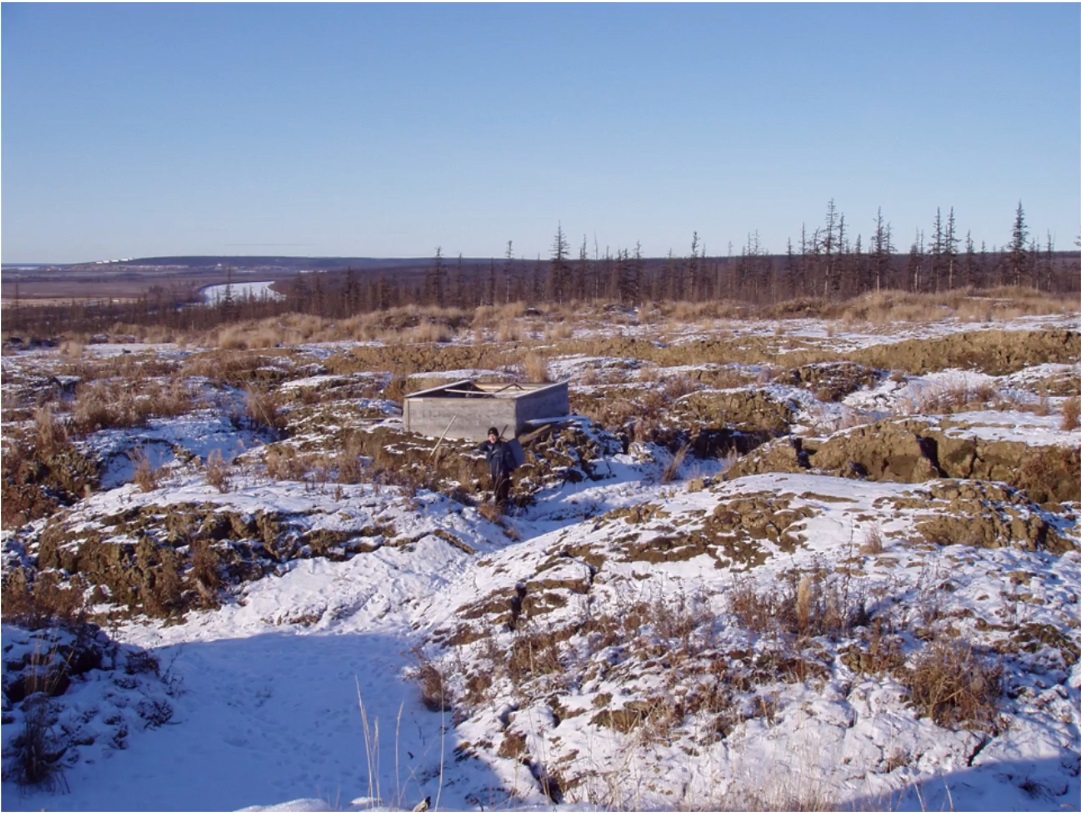
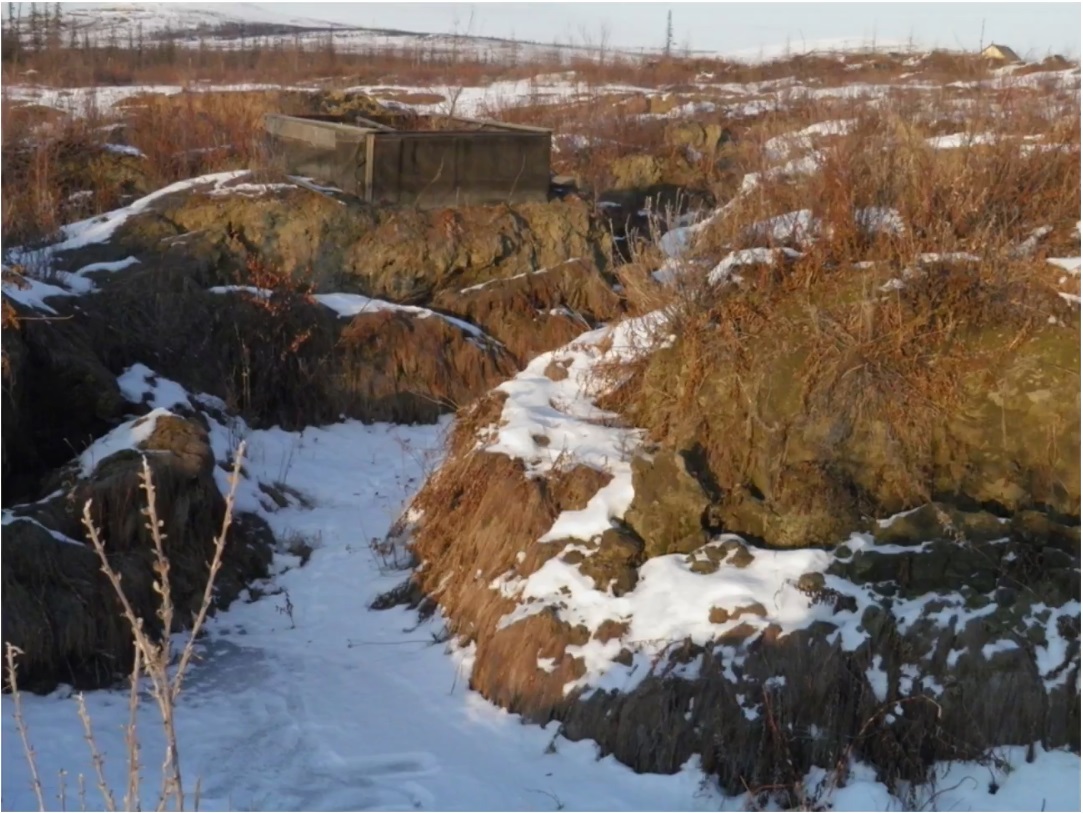
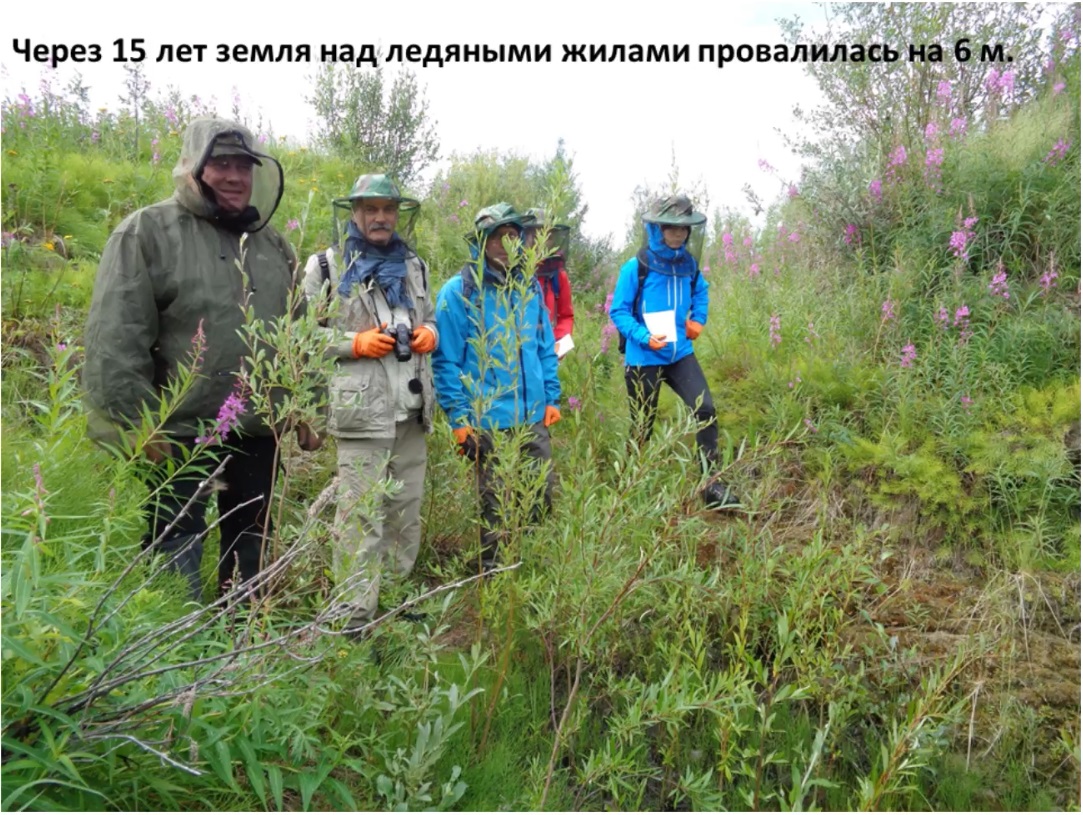

Global problem
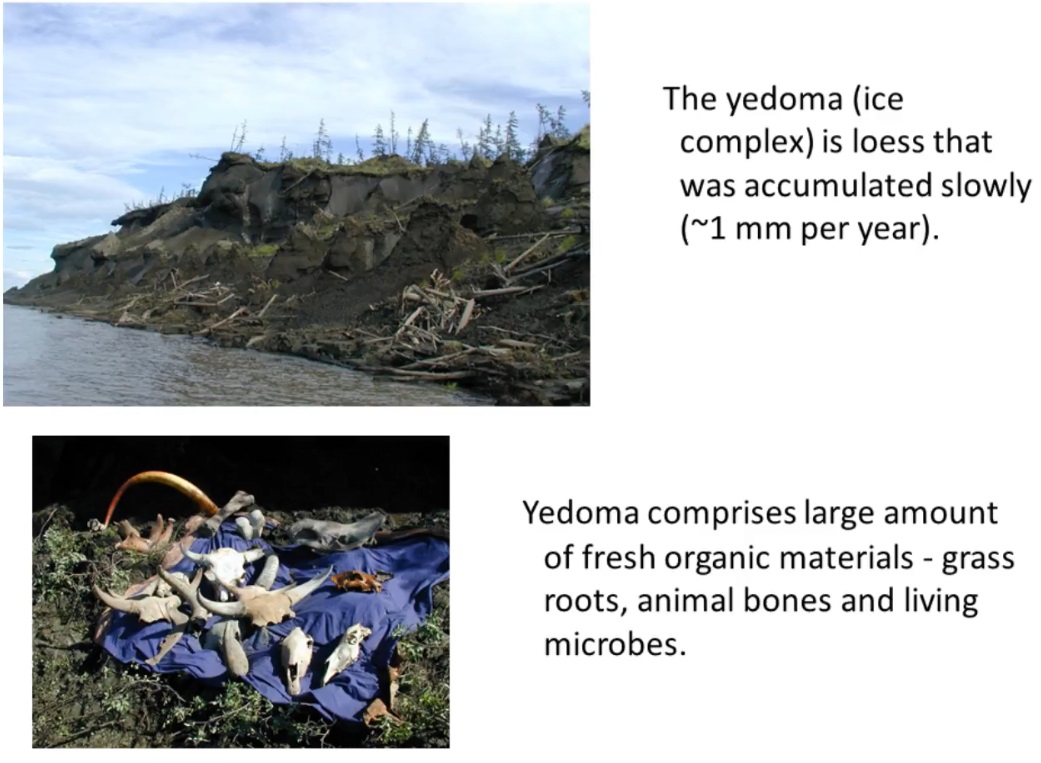
Edom strata contain a lot of organic matter.
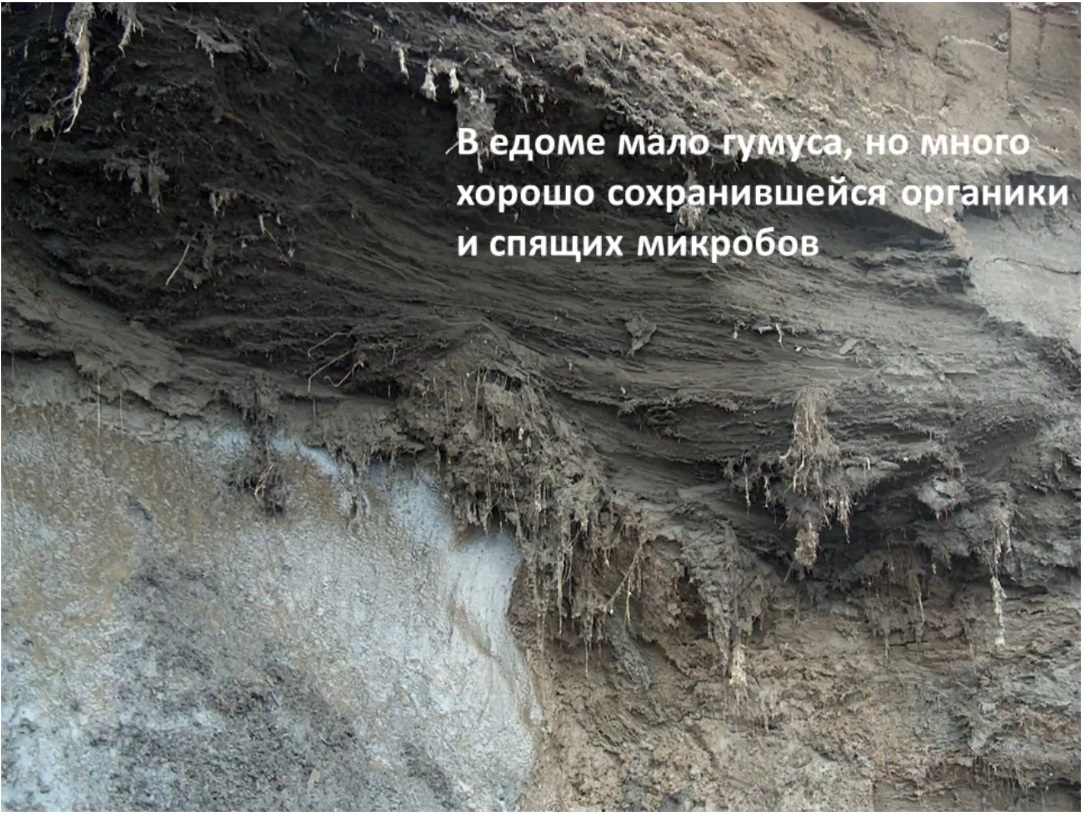
Previously, there was a highly productive steppe with millions of mammoths, horses and bison. Dung and grass.
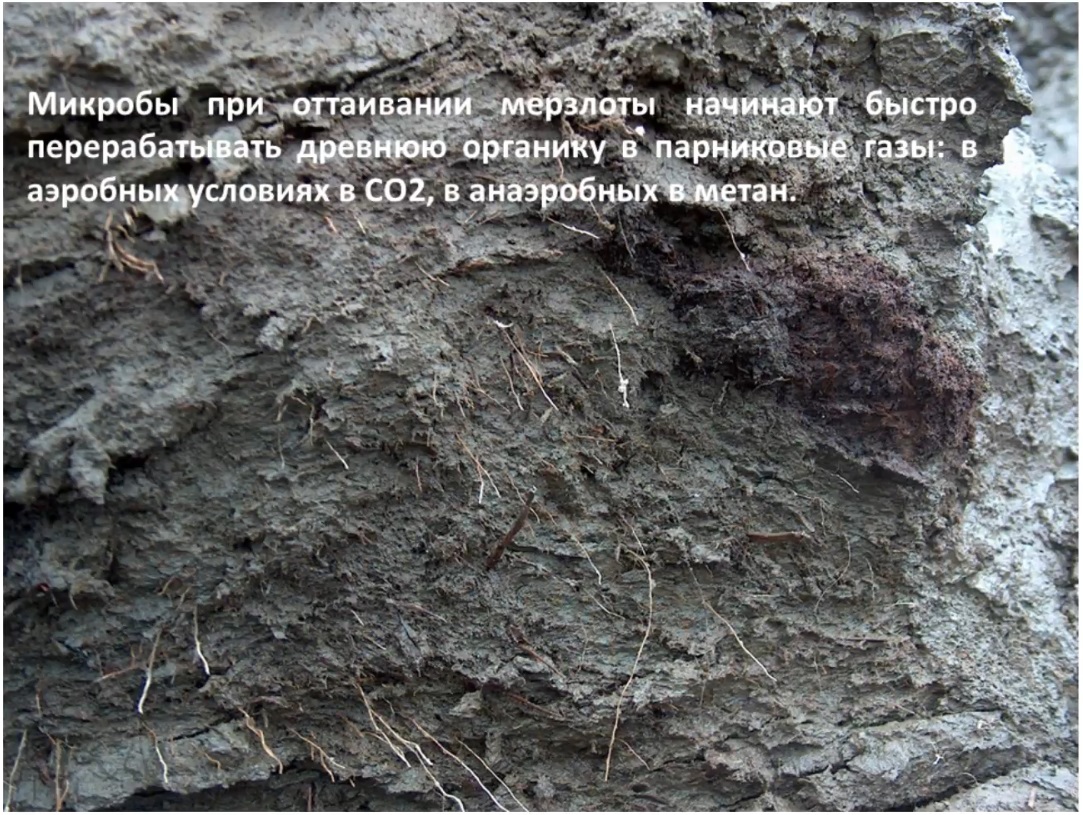
The permafrost is full of roots.
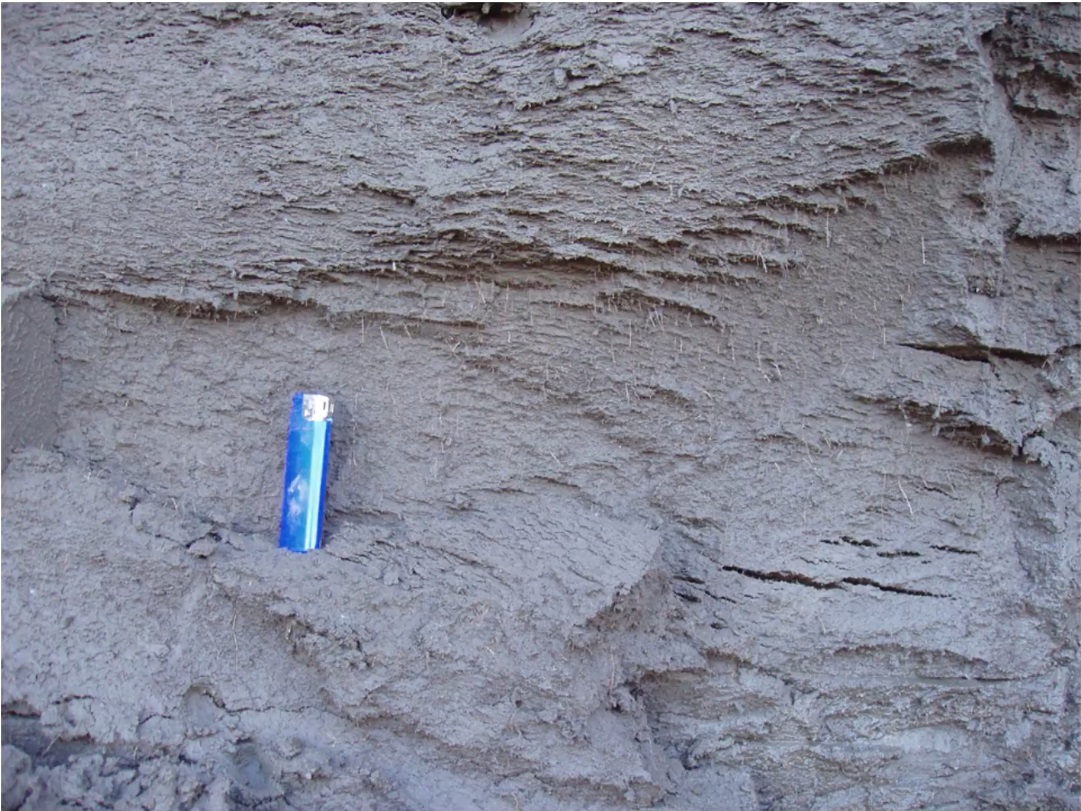
The rich soils of the mammoth ecosystem.
“Microbes” sleep in the permafrost, and today they “wake up” hungry, haven’t eaten anything for 30,000 years. They begin to eat up what they did not eat then. And the food is full. There is almost no humus. When the thickness thaws, it emits carbon dioxide, if dry, if waterlogged - methane.

The location of thick strata.
What is the difference from the “other permafrost”?
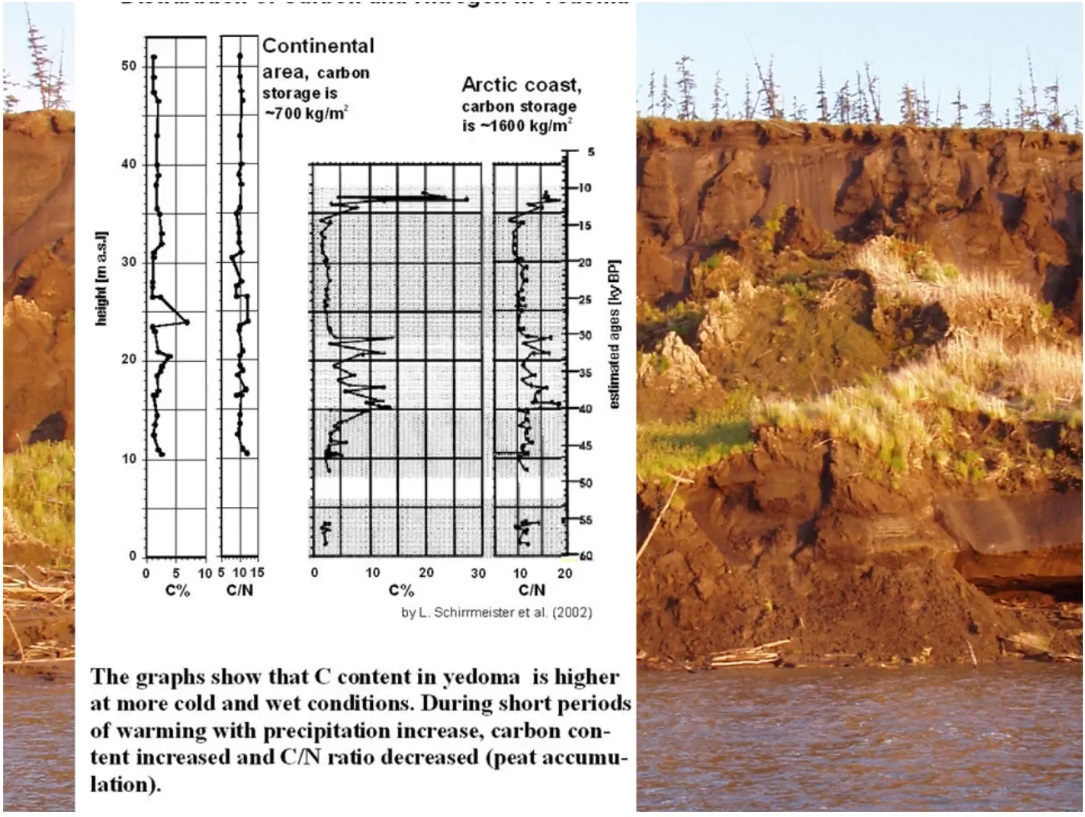
Carbon content up to 10%, as in rich soils. But if all over the world rich soils are half a meter, then we have tens of meters.
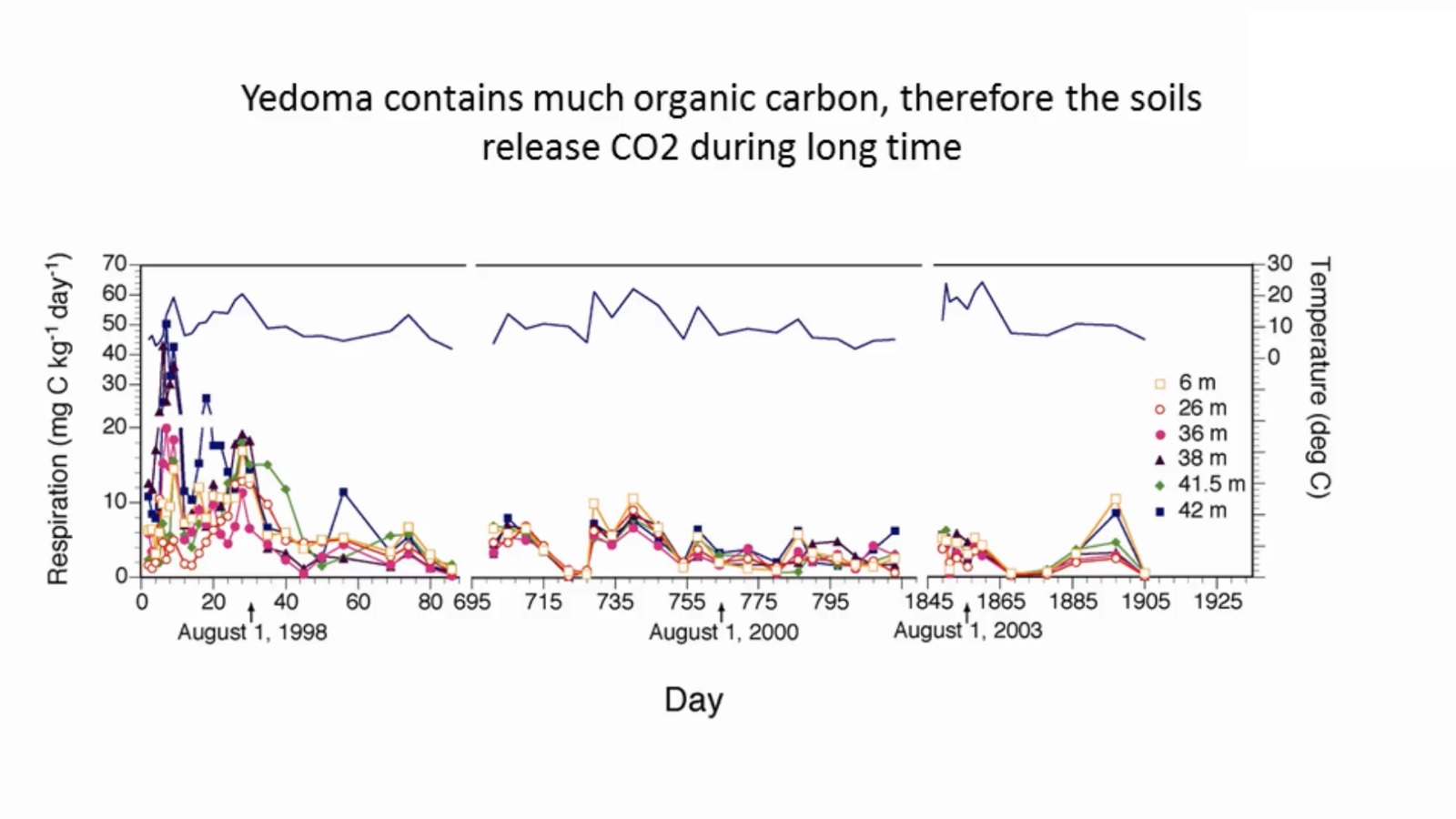
Due to the fact that there are many microbes and organic labile, tasty, there is a powerful production of carbon dioxide.

Compared to modern soils (rich at the surface), Pleistocene soils are rich “in depth”, in terms of carbon dioxide and methane.

There are so many organics that thawing does not require warming . Two large heaps - modern soil (4m) and highly productive soil (3m).
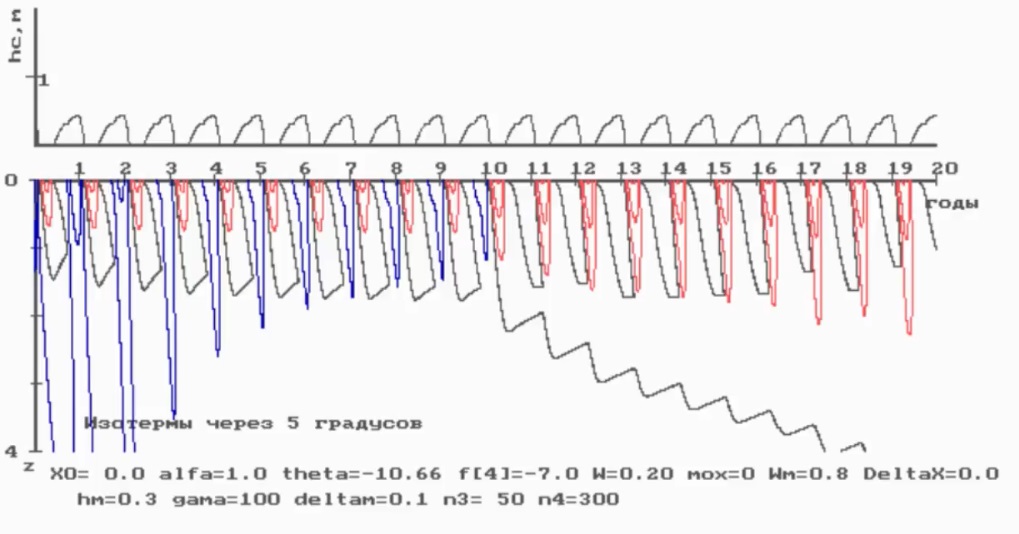
On the mat. models we calculated. From the 10th year, permafrost thawed in a stable climate.
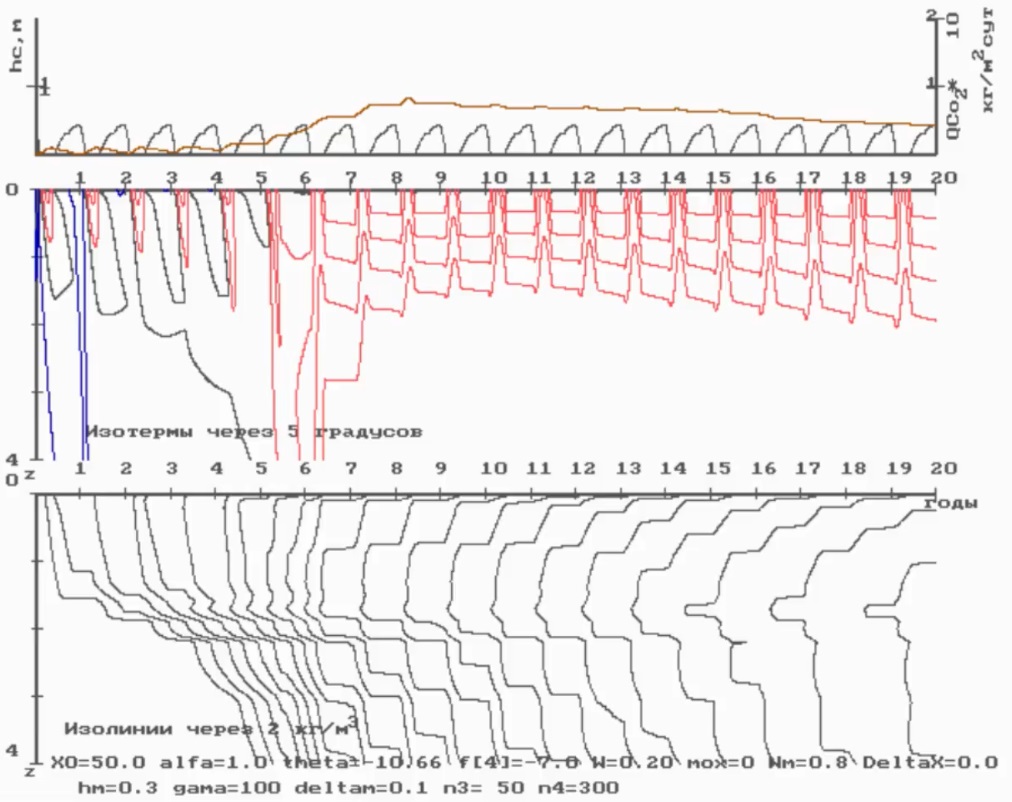
And with a high organic content, the soil almost immediately “lights up”.
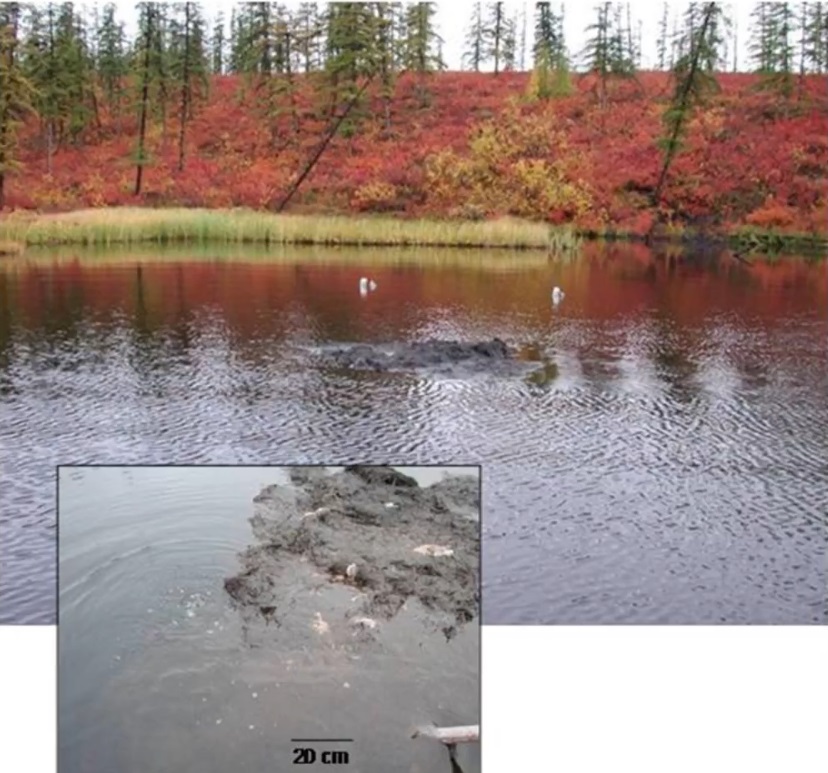
"A piece of the bottom has surfaced."
Carbon dioxide is considered the “main”, but methane is 20 times more powerful in terms of greenhouse effects. There are many places where permafrost thaws under anaerobic conditions - in allthermokarst lakes where permafrost melts under water.
Previously, 25 years ago, there were no lakes as sources of methane. In our lakes, stick a stick anywhere - powerful drilling. Up to 60 liters of methane per square meter.
Methane is pressure sensitive. A supersaturated methane sequence looks like cheese. To provoke the release of methane - just stamp your foot or poke a stick.
If you keep this weather in such a way that there is low water and no waves, then on the Arctic seas you can see a good methane emission.
In rivers, this is everywhere - as soon as the level drops - bubbles from all places. And in the lakes the level is stable. In them, methanogenesis is tied to atmospheric pressure. as low pressure as methane emission. And low pressure is usually wind, rain, cyclone, storm, i.e. low visibility.

If a “successful” autumn, and the first frost without wind, then the lakes freeze like this.

This is wormwood, bubbles are bubbling here. "Hot spot." A continuous stream of gas evolution, pulling warm water along with it.
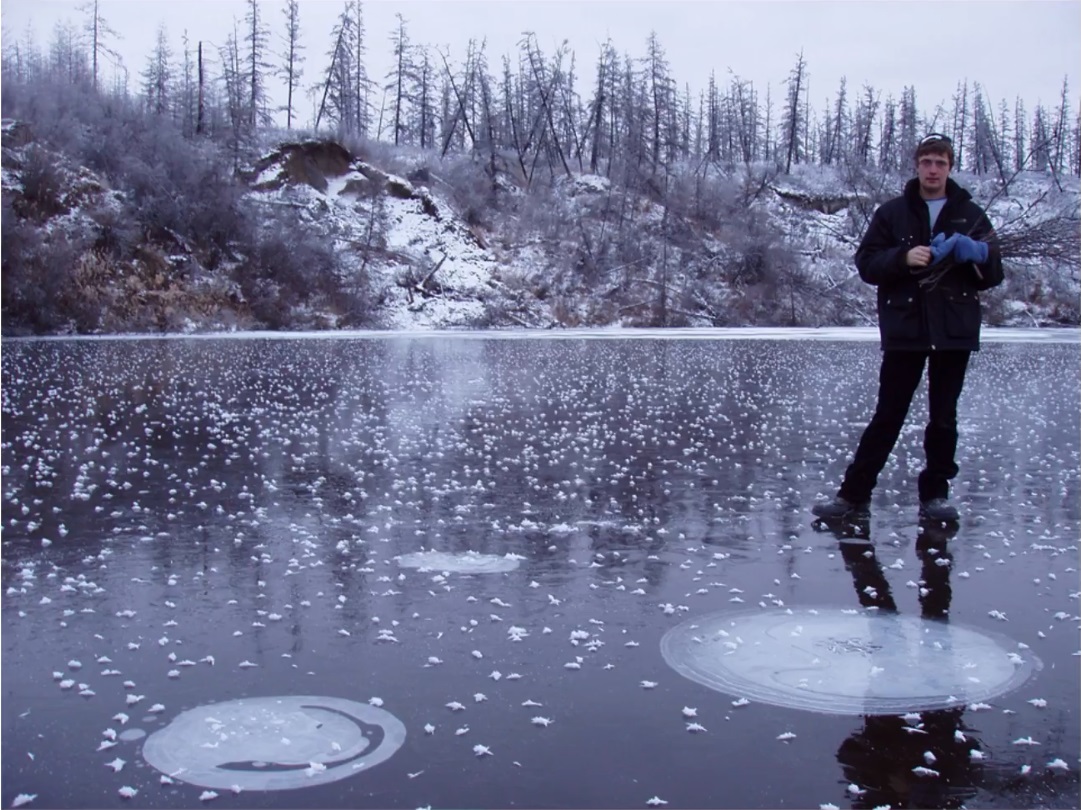
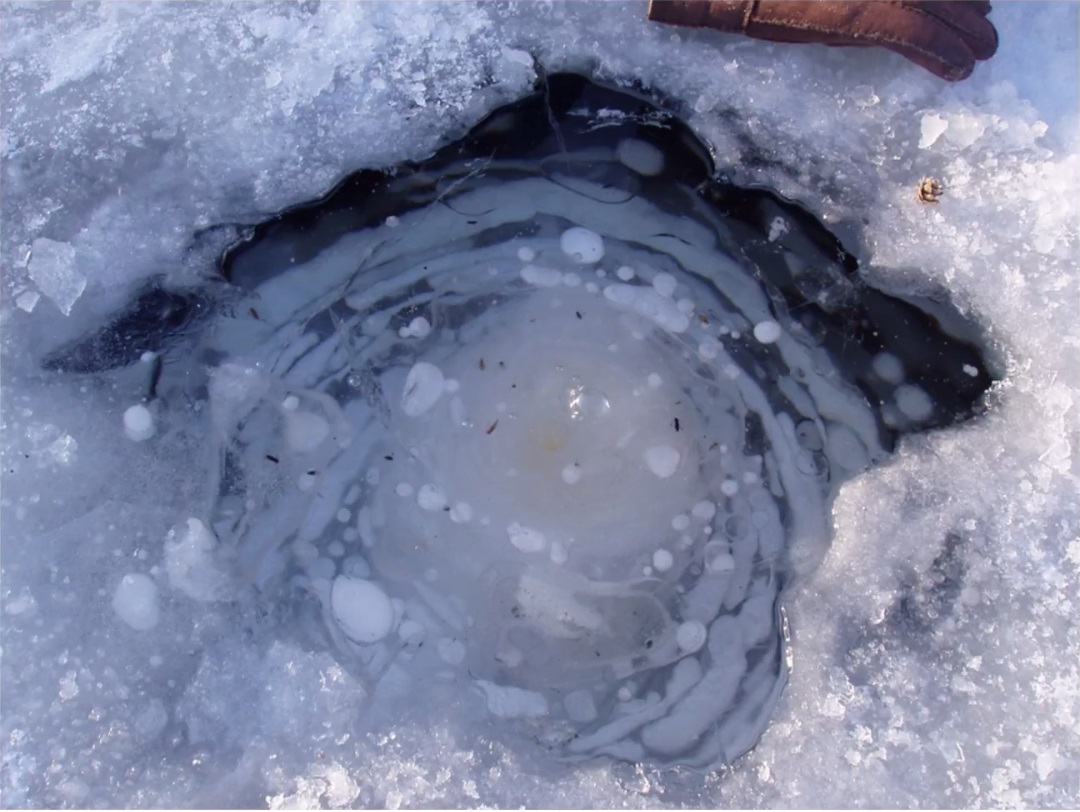
But in severe frost it can freeze.

Some do not freeze even in severe frost.
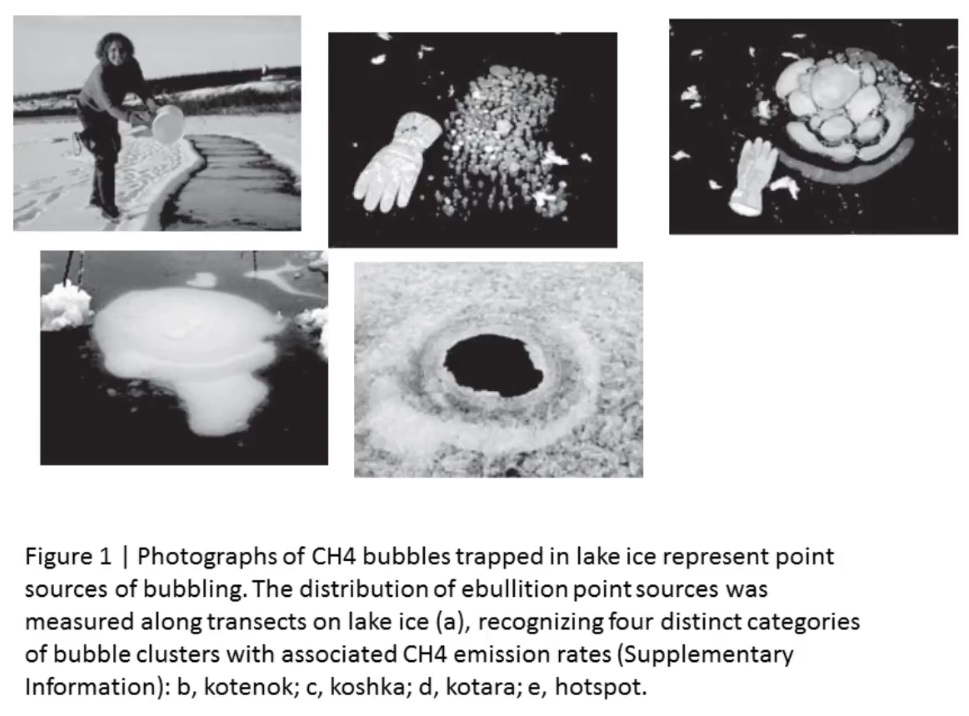
“Kitten”, “cat”, “kitty”, “hotspot” - classification of gas formation.
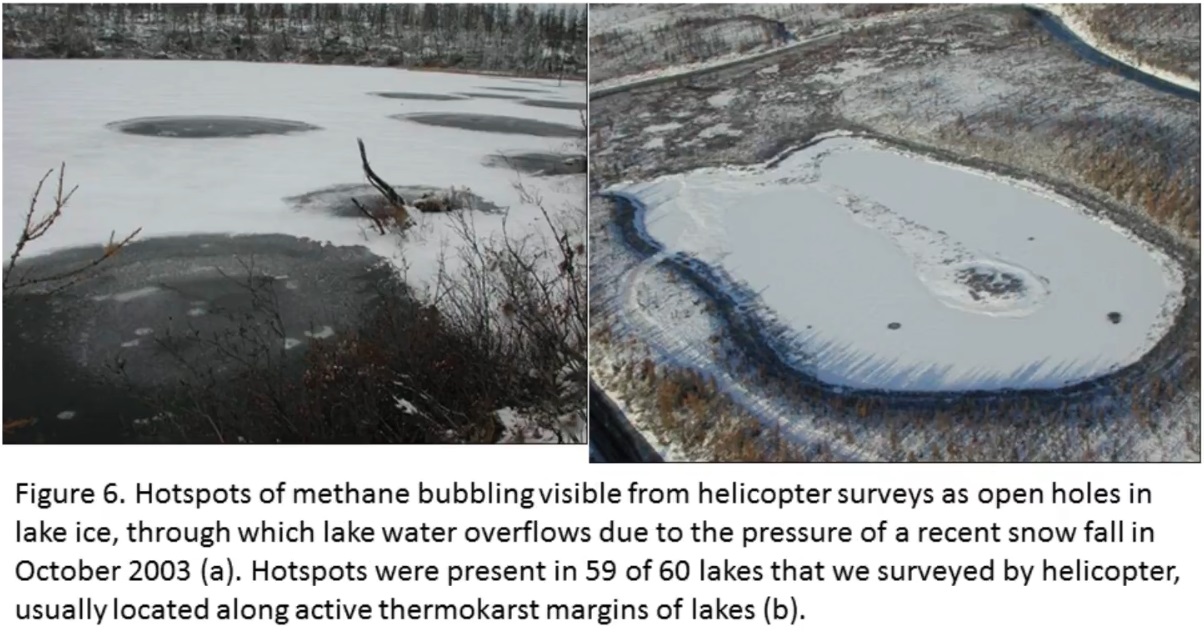
In the tundra in the fall from the air it is easy to find all the gas emissions.

Graduate students first cleared the snow, and then 30 cm of ice ... All for the sake of a detailed map of gas evolution.
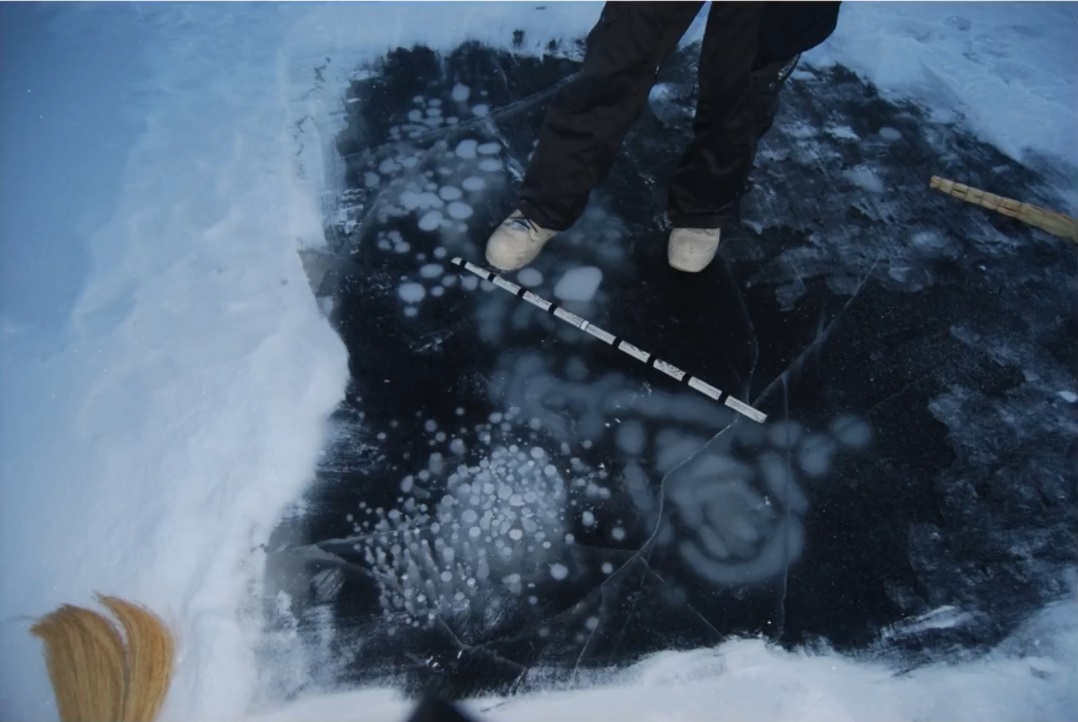
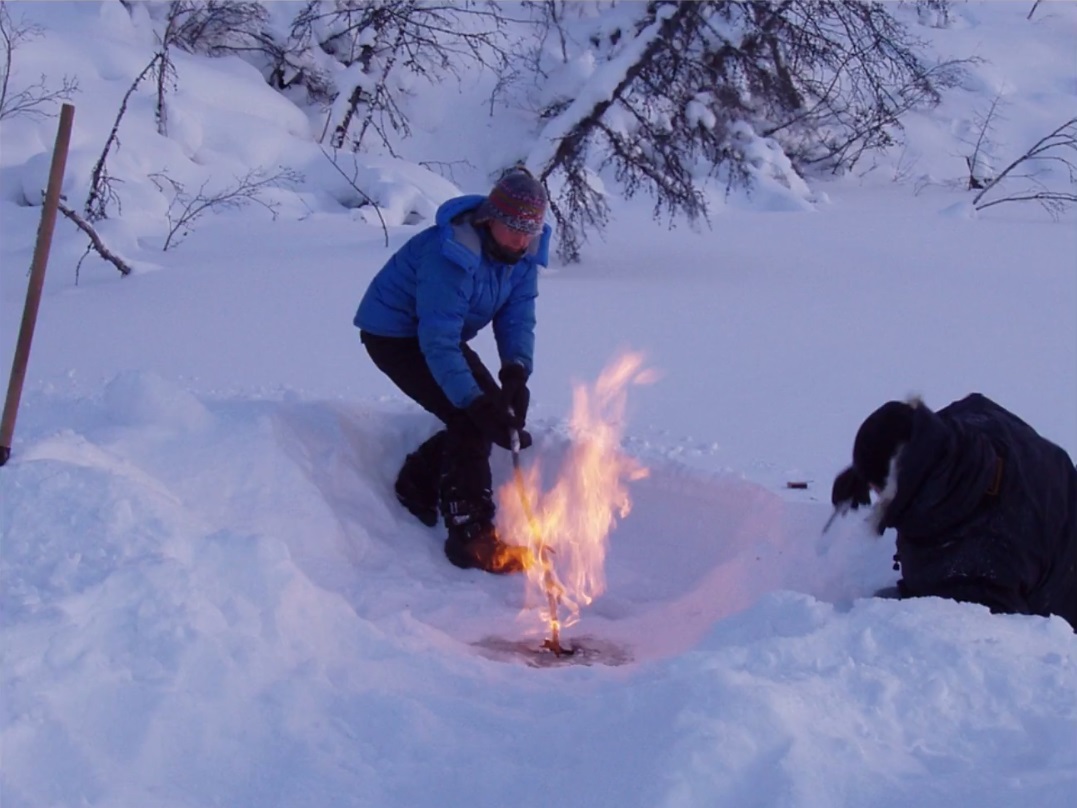
It happens that 200-300 liters of methane accumulate.
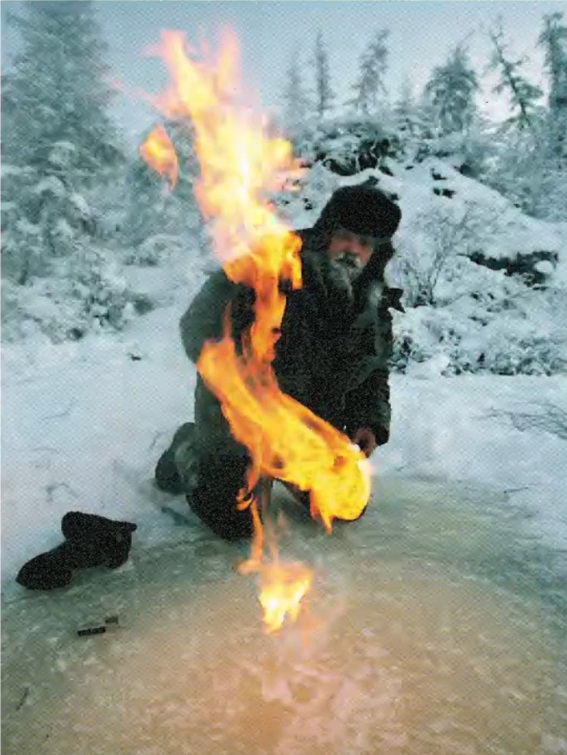
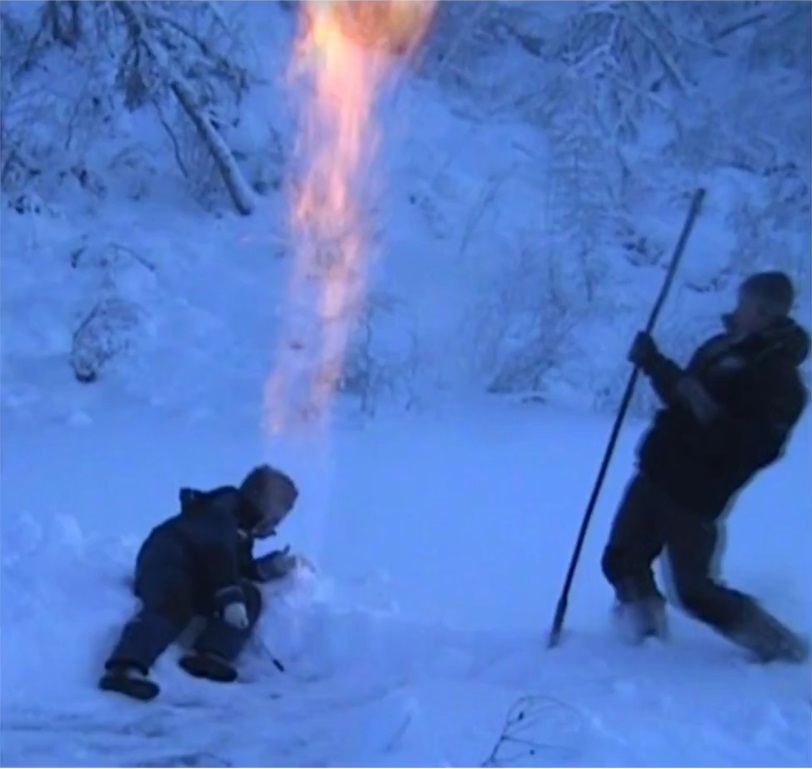
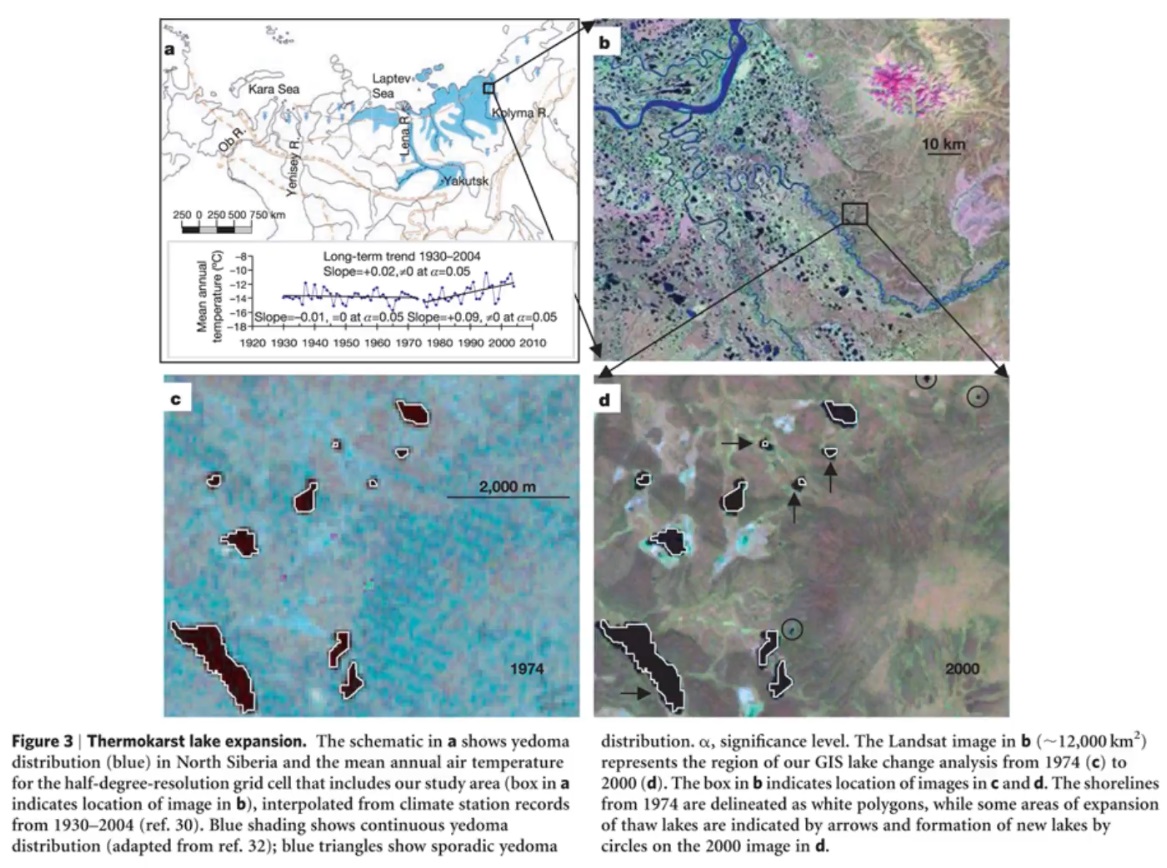
There are many lakes, but the most powerful gas evolution occurs where mammoth soils are washed away, where fresh organic matter falls into the melting zone.
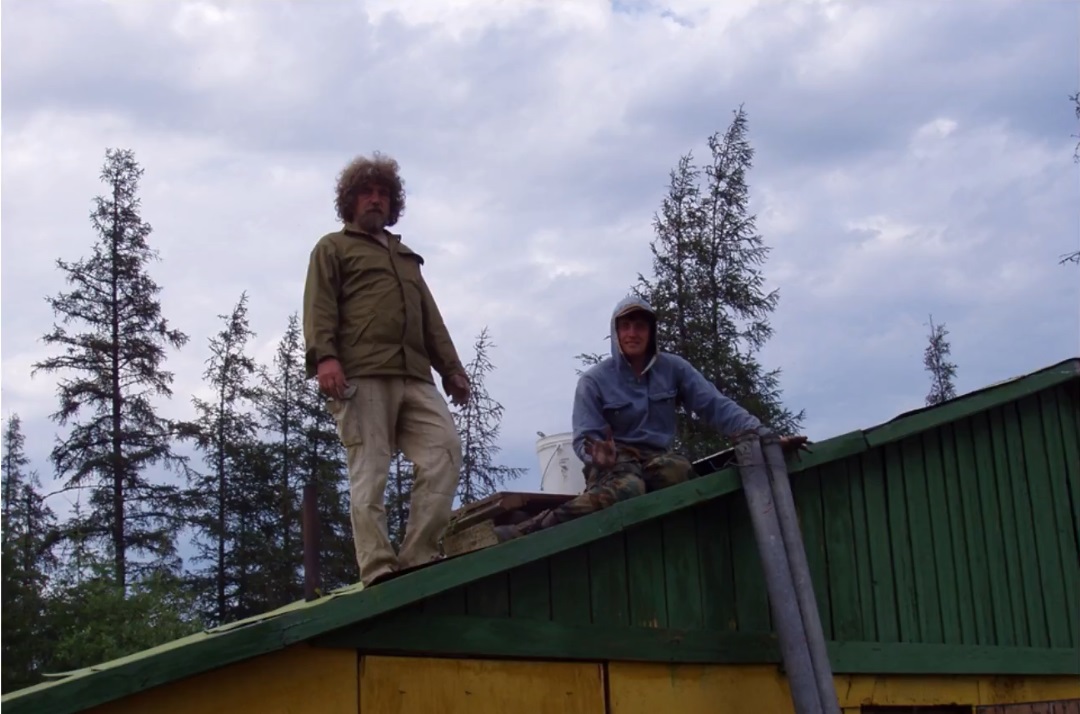
Permafrost is melting. It is necessary to evaluate which part will be released by carbon dioxide, and which part will be released by methane. We stuff the pipes with food.

The carbon dioxide content rises to 20% (in the soil), then the growth stops. Microbes consume oxygen so intensively that oxygen does not penetrate deeper than a meter.

The content of carbon dioxide and methane. In dry soil, methanogenesis is underway.

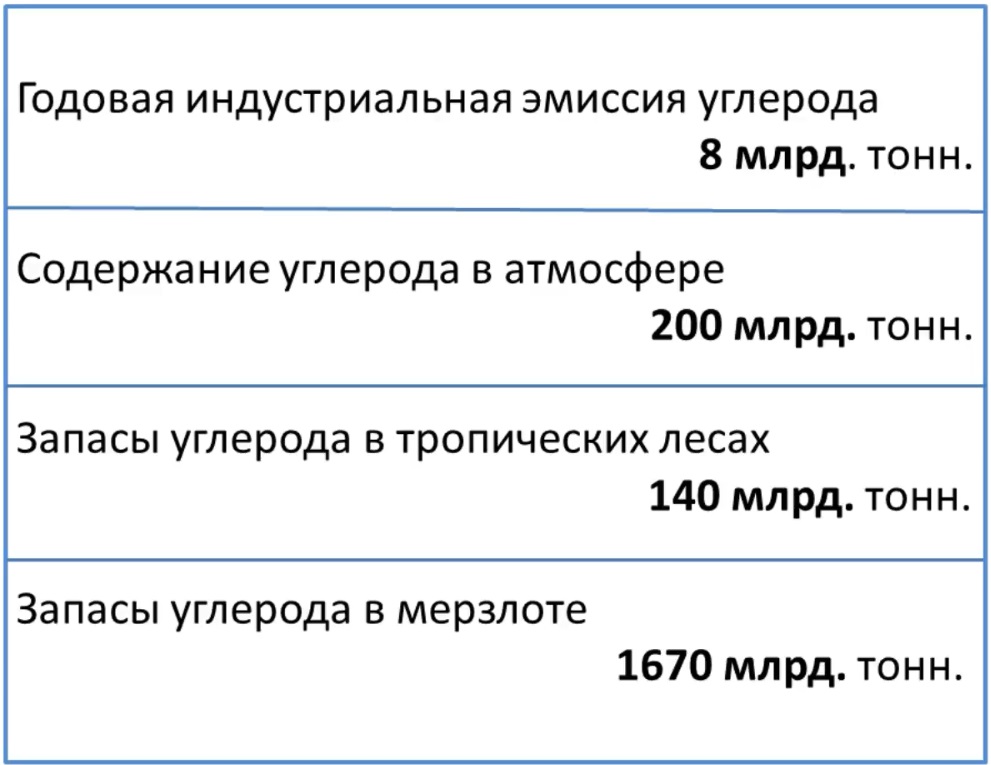
A third of the permafrost is “superficial,” which has begun to melt. In the next 20-30 years, emission of hundreds of gigatons of carbon is likely.
There are a lot of questions.
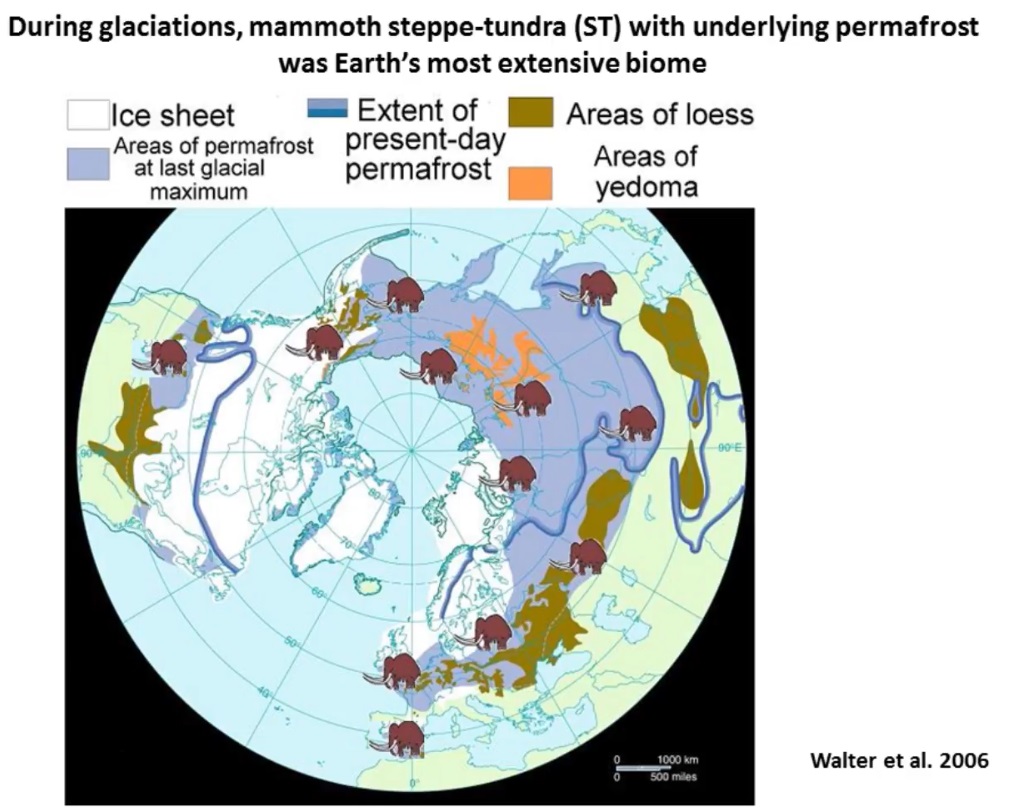
It was difficult to publish these studies. We measured the area on which the edom lies , measured its thickness, measured the carbon content and got huge gigatons. But for 10 years I could not publish it. Reviewers write devastating reviews. And so every year 10 years in a row, until Science published an article without review.

We made a model of soil sedimentation. Black is humus, gray is a labile organic matter.
Photosynthesis does not require temperatures, but decomposition is very sensitive to temperature. In the north there is a frequent situation when in the depths of organic matter more than on the surface. In Europe, there was also permafrost, which means that when it thawed, greenhouse gases also emitted.
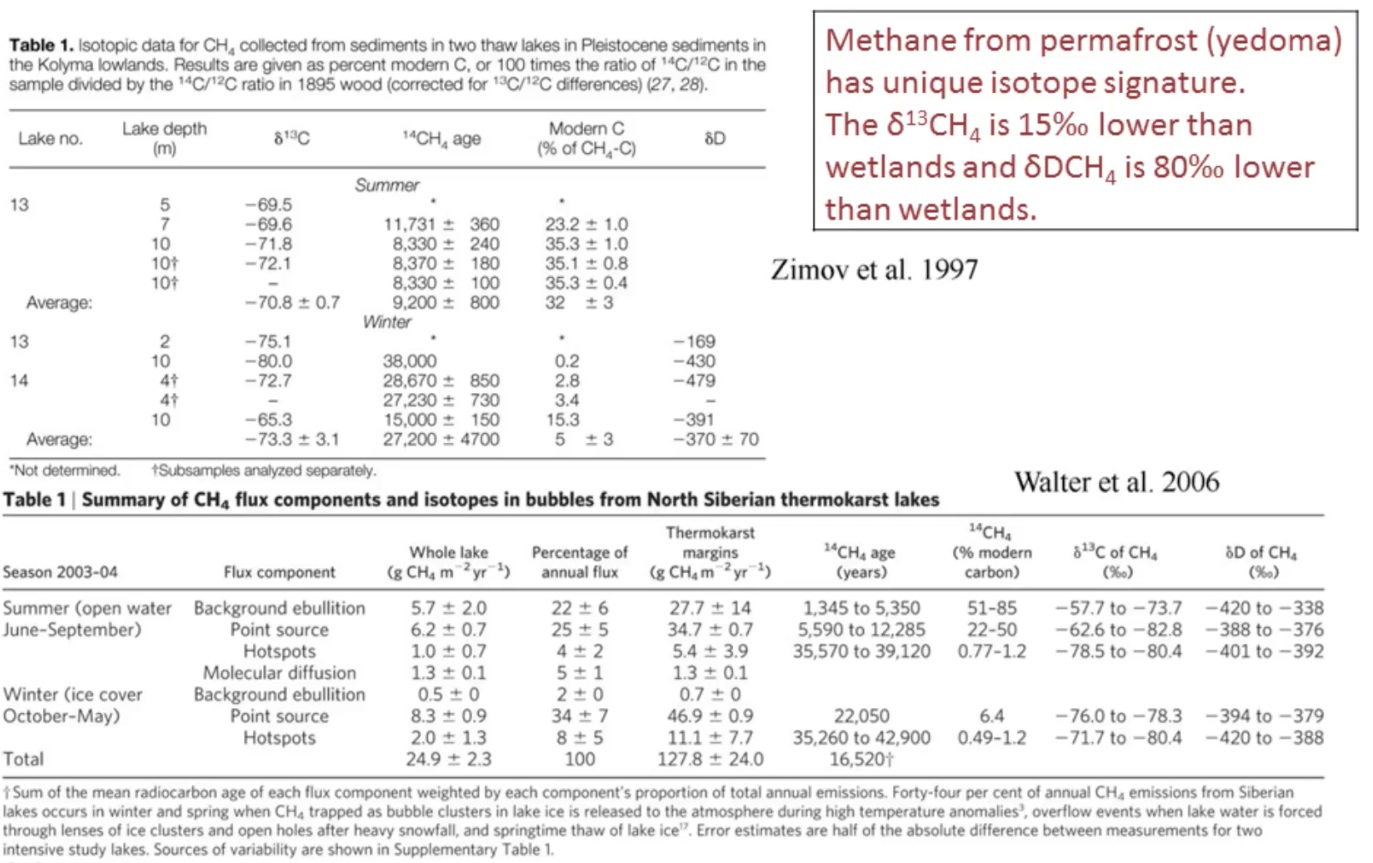
And why I couldn’t post anything about permafrost for a long time, because after the measurements I wrote that there was more permafrost before and when it thawed, greenhouse gases in such and such quantities were also released. And this is already radically changing the carbon cycle scheme.
Methane from our lakes is very peculiar in its isotopic composition - there are no heavy isotopes.

The permafrost methane emission has a unique isotopic composition.
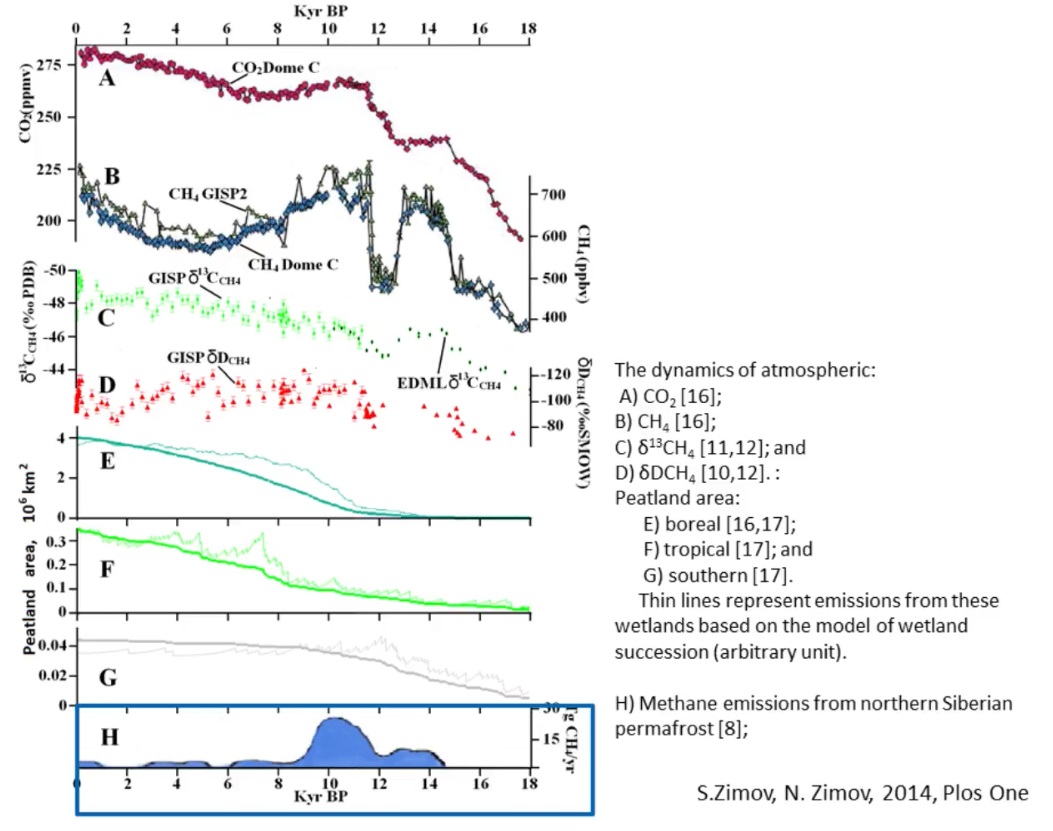
What happened at the turn of the Pleistocene and Holocene. The reason for the sharp change in the amount of methane has been discussed for a long time (expansion of swamps, emission from gas hydrates).
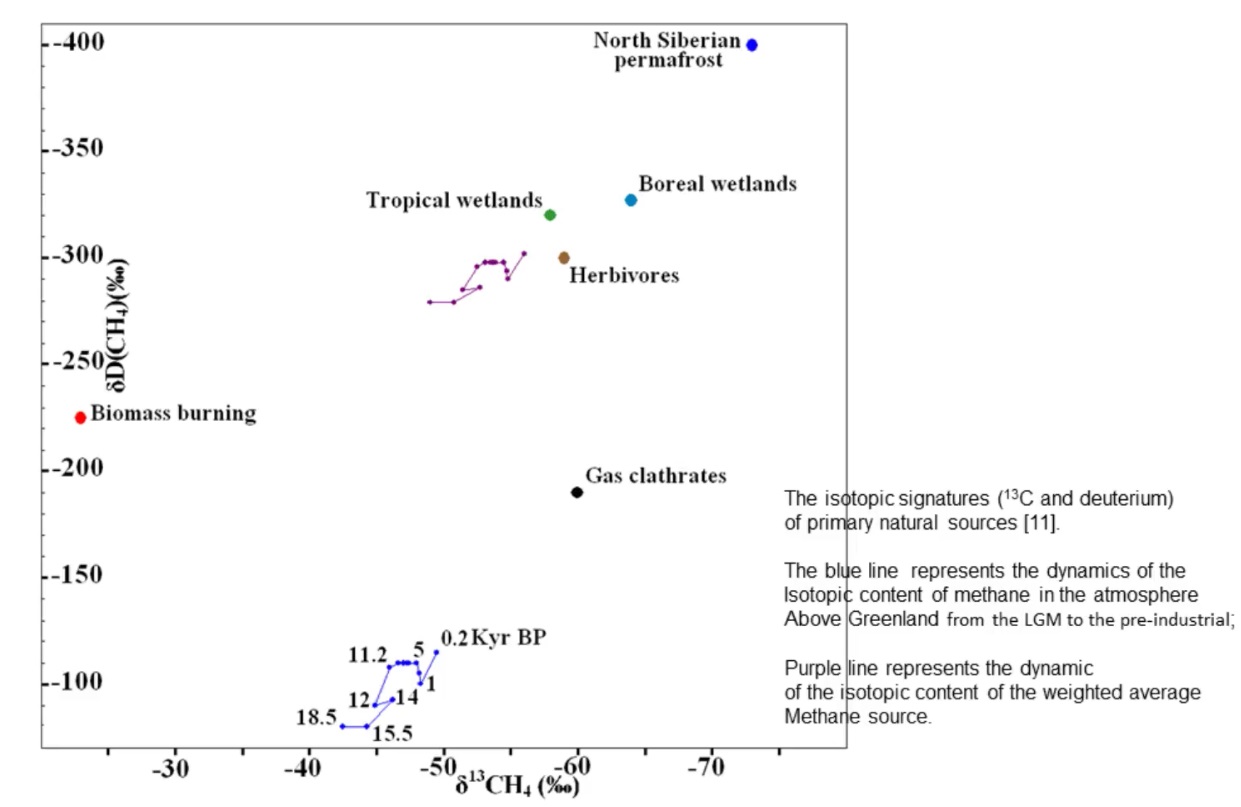
Isotope field. The content of deuterium in methane and carbon-13.
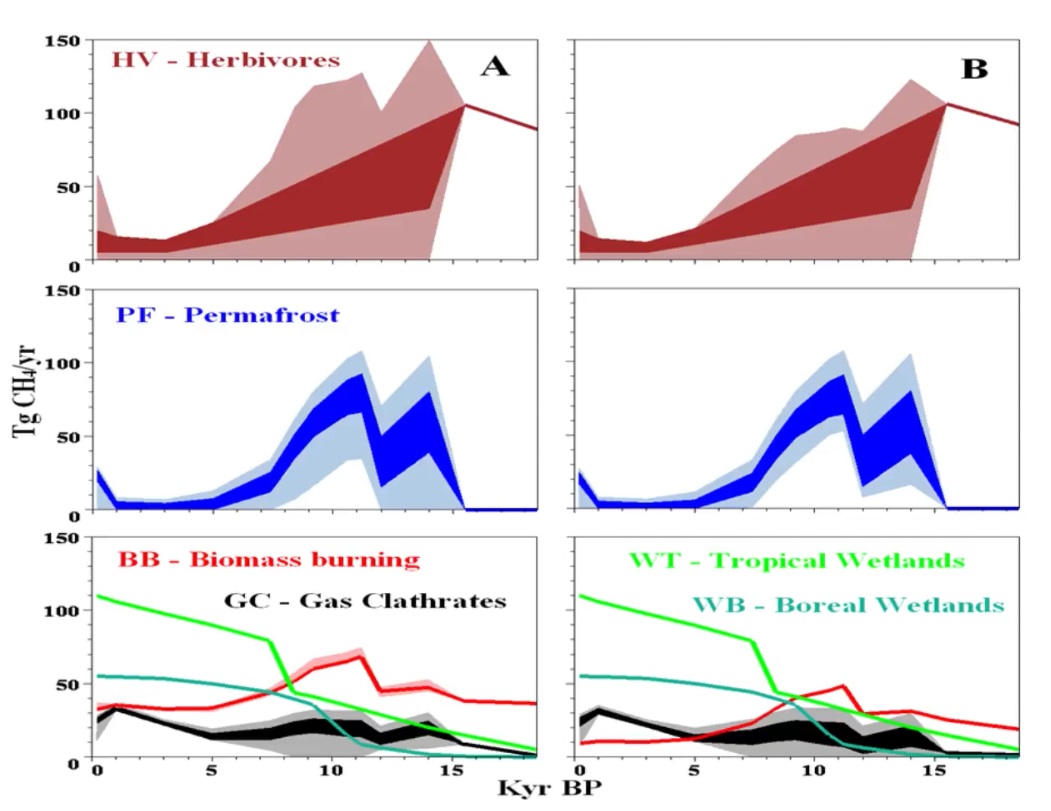
The dynamics of the main sources of methane in the atmosphere was restored.
During the ice ages, the main source of methane in the atmosphere was herbivores: cows, deer, goats. In horses, pigs, mammoths, emissions are 4 times less.
And then the permafrost began to melt.
Methane stands out, and then what happens to it in the atmosphere? It oxidizes to carbon dioxide in 10 years, due to photochemical reactions.
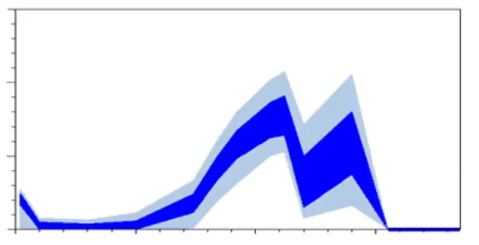
If you integrate the graph, it turns out that at the Pleistocene-Holocene boundary, about 300 gigatons of carbon entered the atmosphere only in the form of methane during the thawing of (European) permafrost.
If permafrost was the main component in the emission of methane, then we can say that it was also the main component in the emission of carbon dioxide.

The people began to restore the carbon budget in the Pleistocene. In the Holocene, the forest area increased 10 times. There were few forests before, the largest biome was the mammoth steppe. Many are sure that the mammoth steppe looked like a polar desert and suggested that its carbon content is 100 grams per square meter (even more in the polar deserts!). And since the largest biome contained 100 g / m2, then terrestrial ecosystems in the past had 500 gigatons less carbon. Those. in the atmosphere it was 100 gigatons less, on land it was 500 gigatons less. Only the ocean was the "answer." So in the era of glaciers, the ocean absorbed about 600 gigatons of carbon. And the carbon dioxide content in the atmosphere was less, and the ocean is always in equilibrium with the atmosphere.
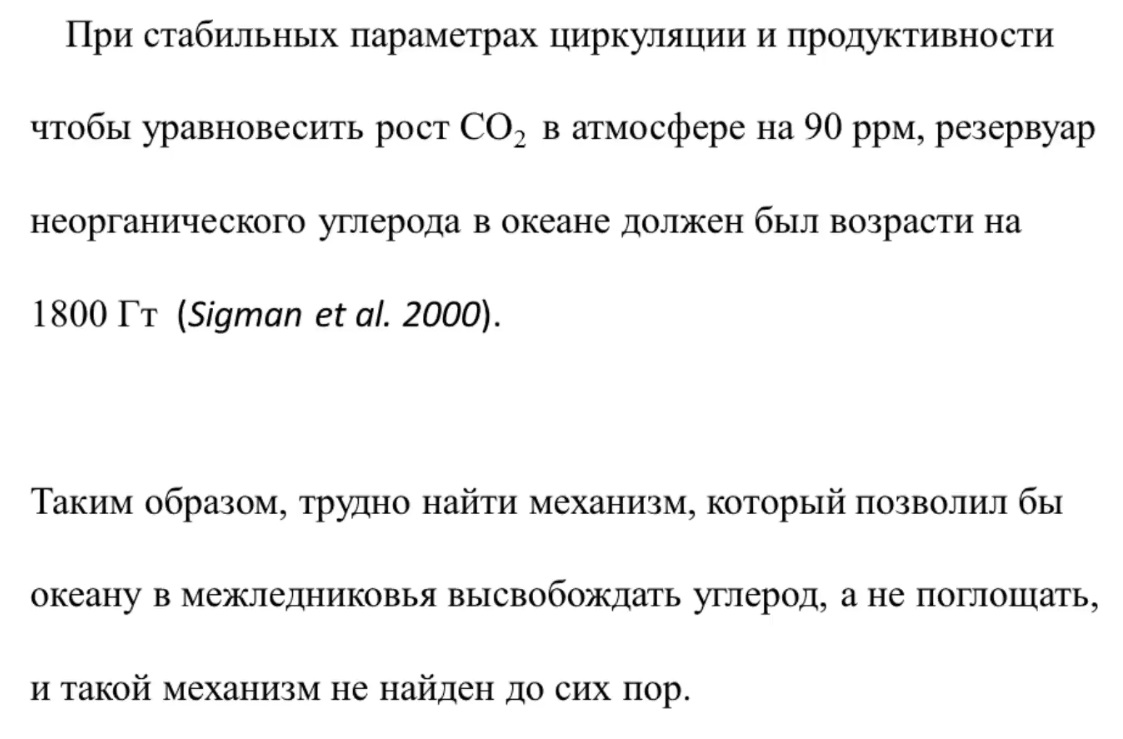
The community of oceanologists has been looking for a black cat in a dark room for 20 years. We went through all the options - they do not work.

The ocean did not take, but gave away carbon!
And on how we understand the carbon cycle, it depends on what to spend money on when fighting climate change.

To be continued…
Contacts
media
- Mammoth House
- A good fence is the main condition for the restoration of the mammoth steppes
- Ice Age Park
- A unique scientific experiment, begun in Yakutia more than 30 years ago, continues
- Welcome to Pleistocene Park: The mammoth plan to recreate an ice age ecosystem in Siberia
- Pleistocene Park: Return of the Mammoth's Ecosystem
PS
Scientific publications
- Zimov S.A., G.M.Zimova, S.P.Daviodov, A.I.Daviodova, Y.V.Voropaev,
Z.V.Voropaeva, S.F.Prosiannikov, O.V.Prosiannikova, I.V.Semiletova, I.P.Semiletov. Winter biotic activity and production of CO2 in Siberian soils: a factor in the greenhouse effect. Jour. Geophys. Res., 1993, 98, 5017- 5023. - Semiletov I.P., Zimov S.A., Voropaev Yu.V., Daviodov S.P., Barkov N.I., Gusev A.M., Lipenkov V.Ya. (1994) Atmospheric Methane in past and present. Trans, (Doklady) Russ. Acad. Sci. v. 339, n 2, p.253-256.
- Zimov, S. A., Chuprynin, V. I., Oreshko, A. P., Chapin III, F. S., Reynolds, J. F., and Chapin, M. C. (1995) Steppe-tundra transition: a herbivore-driven biome shift at the end of the pleistocene. American Naturalist. 146:765-794.
- Zimov, S.A., V.I. Chuprynin, A.P. Oreshko, F.S. Chapin, III, M.C. Chapin, and J.F. Reynolds. 1995. Effects of mammals on ecosystem change at the Pleistocene-Holocene boundary. Pages 127-135 In: F. S. Chapin, III, and Ch. Körner, eds. Arctic and Alpine Biodiversity: Patterns, Causes and Ecosystem Consequences. Springer-Verlag, Berlin.
- Chapin, III, S.A. Zimov, G.R. Shaver, and S.E. Hobbie. 1996. CO2 fluctuation at high latitudes. Nature 383: 585-586.
- Zimov, S.A., S.P. Davidov, Y.V. Voropaev, S.F. Prosiannikov, I.P. Semiletov, M.C. Chapin, and F.S. Chapin, III. 1996. Siberian CO2 efflux in winter as a CO2 source and cause of seasonality in atmospheric CO2. Climatic Change 33:111-120
- Semiletov I.P., Pipko I.I., Pivovarov N.Ya., Popov V.V., Zimov S.A., Voropaev Yu.V., and S.P.Daviodov (1996) Atmospheric carbon emission from North Asian Lakes: a factor of global significance. Atmospheric Environment 30: 10⁄11, p.1657-1671.
- Zimov, S.A., Y.V. Voropaev, I.P. Semiletov, S.P. Davidov, S.F. Prosiannikov, F.S. Chapin, III, M.C. Chapin, S. Trumbore, and S. Tyler. 1997. North Siberian lakes: a methane source fueled by Pleistocene carbon. Science 277:800-802.
- Zimov, G.M. Zimova, M.C. Chapin, and J.F. Reynolds. 1999. Contribution of disturbance to high-latitude amplification of atmospheric CO 2. Bull. Ecol. Soc. Amer.
- Zimov, S.A., Davidov, S.P., Zimova, G.M., Davidova, A.I., Chapin, F.S., III, Chapin, M.C. and Reynolds, J.F. 1999. Contribution of disturbance to increasing seasonal amplitude of atmospheric CO2. Science 284: 1973-1976.
- Chapin, F.S. III., McGuire, A.D., Randerson, J., Pielke, Sr., R., Baldocchi, D., Hobbie, S.E., Roulet, N., Eugster, W., Kasischke, E., Rastetter, E.B., Zimov, S.A., Oechel, W.C., and Running, S.W. 2000. Arctic and boreal ecosystems of western North America as components of the climate system. Global Change Biology 6: S211-S223.
- Zimov, S.A., Y.V. Voropaev, S.P. Davydov, G.M. Zimova, A.I. Davydova, F.S. Chapin, III, and M.C. Chapin. 2001. Flux of methane from North Siberian aquatic systems: Influence on atmospheric methane. Pages 511-524 In: R. Paepe and V. Melnikov (Eds.) Permafrost Response on Economic Development, Environmental Security and Natural Resources. Kluwer Academic Publishers, The Hague.
- Чупрынин В.И., Зимов С.А., Молчанова Л.А. Моделирование термического режима почвогрунтов с учетом биологического источника тепла// Криосфера Земли. 2001. Т.5. №1. С. 80-87
- B. Shapiro, A. Drummond, A. Rambaut, M. Wilson, P. Matheus, A. Sher, O. Pybus, M.
T. P. Gilbert, I. Barnes, J. Binladen, E. Willerslev, A. Hansen, G. F., Baryshnikov, J. Burns, S. Davydov, J. Driver, D. Froese, C. R., Harington, G. Keddie, P. Kosintsev, M. L. Kunz, L. D. Martin, R., Stephenson, J. Storer, R. Tedford, S. Zimov, A. Cooper. Rise and Fall of the Beringian Steppe Bison. Science, 2004; 306: 1561-1565. - Федоров-Давыдов Д.Г., Давыдов С.П., Давыдова А.И., Зимов С.А., Мергелов Н.С., Остроумов В.Е., Сороковиков В.А., Холодов А.Л., Митрошин И.А… Пространственно-временные закономерности сезонного протаивания почв на севере Колымской низменности. Криосфера Земли, 2004, т.8, №4, с 15-26.
- Fyodorov-Davydov, D., V.Sorokovikov, V.Ostroumov, A.Kholodov, I.Mitroshin, N.Mergelov, S.Davydov, S.Zimov, A.Davydova. Spatial and temporal observations of seasonal thaw in the Northern Kolyma Lowland. Polar Geography. 2004, 28, 4, pp. 308-325
- F. Stuart Chapin III, Terry V. Callaghan, Yves Bergeron, M. Fukuda, J. F. Johnstone, G. Juday, and S. A. Zimov. Global Change and the Boreal Forest: Thresholds, Shifting States or Gradual Change? 2004. AMBIO: A Journal of the Human Environment: Vol. 33, No. 6, pp. 361–365.
- Zimov S.A. Pleistocene Park: Return of the Mammoth’s Ecosystem// Science, 2005, Vol. 308. P. 796-798.
- L. R. Welp, J. T. Randerson, J. C. Finlay, S. P. Davydov, G. M. Zimova, A. I. Davydova, and S. A. Zimov. A high-resolution time series of oxygen isotopes from the Kolyma River: Implications for the seasonal dynamics of discharge and basin-scale water use. Geophysical Research Letters, VOL. 32, L14401, doi:10.1029/2005GL022857, 2005.
- C. Corradi, O. Kolle, K. Walter, S. A. Zimov and E.-D. Schulze
Carbon dioxide and methane exchange of a north-east Siberian tussock tundra.
Global Change Biology (2005) 11, 1910–1925, doi: 10.1111/j.1365-2486.2005.01023.x. - K. M. Walter, S. A. Zimov, J. P. Chanton, D. Verbyla & F. S. Chapin III. 2006. Methane bubbling from Siberian thaw lakes as a positive feedback to climate warming. Nature 443, 71-75(7 September 2006) | doi:10.1038/nature05040.
- Sergey A. Zimov, Edward A. G. Schuur, F. Stuart Chapin III. 2006. Permafrost and the Global Carbon Budget. Science, Vol. 312, P.1612-1613.
- Zimov, S. A., S. P. Davydov, G. M. Zimova, A. I. Davydova, E. A. G. Schuur, K. Dutta, and F. S. Chapin, III (2006), Permafrost carbon: Stock and decomposability of a globally significant carbon pool, Geophys. Res. Lett., 33, L20502, doi:10.1029/2006GL027484. 5 p.
- Finlay J., J. Neff, S. Zimov, A. Davydova, and S. Davydov. Snowmelt dominance of dissolved organic carbon in high-latitude watersheds: Implications for characterization and flux of river DOC. Geophysical Research Letters, vol. 33, L14401, 2006
- Chapin, F. S., III, M. Hoel, S. R. Carpenter, J. Lubchenco, B. Walker, T. V. Callaghan, C. Folke, S. Levin, K.-G. Maler, C. Nilsson, S. Barrett, F. Berkes, A.-S. Crepin, K. Danell, T.Rosswall, D. Starrett, T. Xepapadeas, and S. A. Zimov. Building Resilience and Adaptation to Manage Arctic Change. AMBIO, 2006, Vol.35, No.4, June 2006.P.198-202.
- Koushik Dutta, A, E. A. G. Schuur, J. C. Neff and S. A. Zimov. Potential carbon release from permafrost soils of Northeastern Siberia Global Change Biology (2006) Vol. 12, Number 12, P. 2336–2351, doi: 10.1111/j.1365-2486.2006.01259.x
- Neff, J.C., J. Finlay, S.A. Zimov, S. Davydov, J.J. Carrasco, E.A.G. Schuur, A. Davydova. (2006) Seasonal changes in the age and structure of dissolved organic carbon in Siberian Rivers and streams. Geophysical Research Letters. 33(23), L23401, 10.1029/2006GL028222.
- K. M. Walter, M. E. Edwards, G. Grosse, S. A. Zimov, F. S. Chapin III (2007)
Thermokarst Lakes as a Source of Atmospheric CH4 During the Last Deglaciation
Science, VOL 318. P. 633-636. - D. V. Khvorostyanov,, G. Krinner, P. Ciais, M. Heimann and S. A. Zimov, Vulnerability of permafrost carbon to global warming. Part I: model description and role of heat generated by organic matter decomposition
(Manuscript received 3 November 2005; in final form 8 November 2007) Tellus (2008) B 15 pages. Tellus (Series B) 60, 250-264. - D. V. Khvorostyanov, P. Ciais, G. Krinner, S. A. Zimov, Ch. Corradi
and G. Guggenberger, Vulnerability of permafrost carbon to global warming.Part II: sensitivity of permafrost carbon stock to global warming
(Manuscript received 22 December 2006; in final form 8 November 2007) Tellus (2008) B 11 pages. - Khvorostyanov, D. V., P. Ciais, G. Krinner, and S. A. Zimov (2008), Vulnerability of east Siberia’s frozen carbon stores to future warming, Geophys. Res. Lett., V. 35, Issue 10, L10703, doi:10.1029/2008GL033639 20 May 2008
- K. M. Walter, J. P. Chanton, F. S. Chapin III, E. A. G. Schuur, S. A. Zimov. 2008. Methane production and bubble emissions from arctic lakes: Isotopic implications for source pathways and ages J. Geophys. Res., 113, G00A08, doi:10.1029/2007JG000569
- Schuur, E.A.G, J. Bockheim, J. Canadell, E. Euschkirchen, C. Field, S. Goryachkin, S. Hagemann, P.
Kuhry, P. Lafleur, H. Lee, G. Mazhitova, F. Nelson, A. Rinke, V. Romanovsky, N.
Shiklomanov, C. Tarnocai, S. Venevsky, J. G. Vogel, S.A. Zimov The vulnerability of permafrost carbon to climate change: implications for the global carbon cycle. BioScience
September 2008, Vol.58, No 8. P. 701-714. - McClelland, J. W., R. M. Holmes, B. J. Peterson, R. Amon, T. Brabets, L. Cooper, J. Gibson, V. V. Gordeev, C. Guay, D. Milburn, R. Staples, P. A. Raymond, I. Shiklomanov, R. Striegl, A. Zhulidov, T. Gurtovaya, and S. Zimov. 2008. Development of a pan-Arctic database for river chemistry.
EOS, Transactions, American Geophysical Union, 89:217-218. - Guido Grosse, Vladimir Romanovsky, Katey Walter, Anne Morgenstern, Hugues Lantuit, Sergei Zimov. Thermokarst Lakes: High-Resolution Distribution and Temporal Changes at Three Yedoma Sites in Siberia. Proceedings of NINTH INTERNATIONAL CONFERENCE ON PERMAFROST, P.551-556.
- Khalil, M. A. K., M. A. K. Khalil, C. L. Butenhoff, S. Zimov, K. M. Walter, J. M. Melack (2009), Correction to “Global methane emissions from wetlands, rice paddies, and lakes”, Eos Trans. AGU, 90(11), 92, 10.1029/2009EO110019.
- Zhuang, Q., J. M. Melack, S. Zimov, K. M. Walter, C. L. Butenhoff, and M. A. K. Khalil (2009), Global Methane Emissions From Wetlands, Rice Paddies, and Lakes, Eos Trans. AGU, 90(5), doi:10.1029/2009EO050001.
- Q. Zhuang, J. M. Melack, S. Zimov, K. M. Walter, C. L. Butenhoff, and M. A. K. Khalil
Global Methane Emissions From Wetlands, Rice Paddies, and Lakes. Eos, Vol. 90, No. 5, 3 February 2009. P. 37-38. - Zimov N. S., S. A. Zimov, A. E. Zimova, G. M. Zimova, V. I. Chuprynin, and F. S. Chapin III (2009), Carbon storage in permafrost and soils of the mammoth tundra-steppe biome: Role in the global carbon budget, Geophys. Res. Lett., 36, L02502, doi:10.1029/2008GL036332.
- 1. Zimov S., Implications of Ancient Ice. Science, 6 February 2009: Vol. 323. no. 5915, pp. 714 – 715.
- Tarnocai, C., J. G. Canadell, E.A.G. Schuur, P. Kuhry, G. Mazhitova, and S. Zimov (2009), Soil Organic Carbon Pools in the Northern Circumpolar Permafrost Region,Global Biogeochem. Cycles, Vol. 23, No. 2. (27 June 2009), GB2023.
- Levin, I., Naegler, T., Heinz, R., Osusko, D., Cuevas, E., Engel, A., Ilmberger, J., Langenfelds, RL, Neininger, B., Rohden, C. v. , Steele, LP, Weller, R., Worthy, DE, and Zimov, SA: Atmospheric observation-based global SF6 emissions - comparison of top-down and bottom-up estimates, Atmos. Chem. Phys. Discuss., 9, 26653-26672, 2009.
- Merbold L, Kutsch WL, Corradi C., Kolle O., Rebmann C., Stoy PC, Zimov ZA and Schulze E.-D. Artificial drainage and associated carbon fluxes (CO2 / CH4) in a tundra ecosystem (2009) Global Change Biology, doi: 10.1111 / j.1365-2426.2009.01962.x
